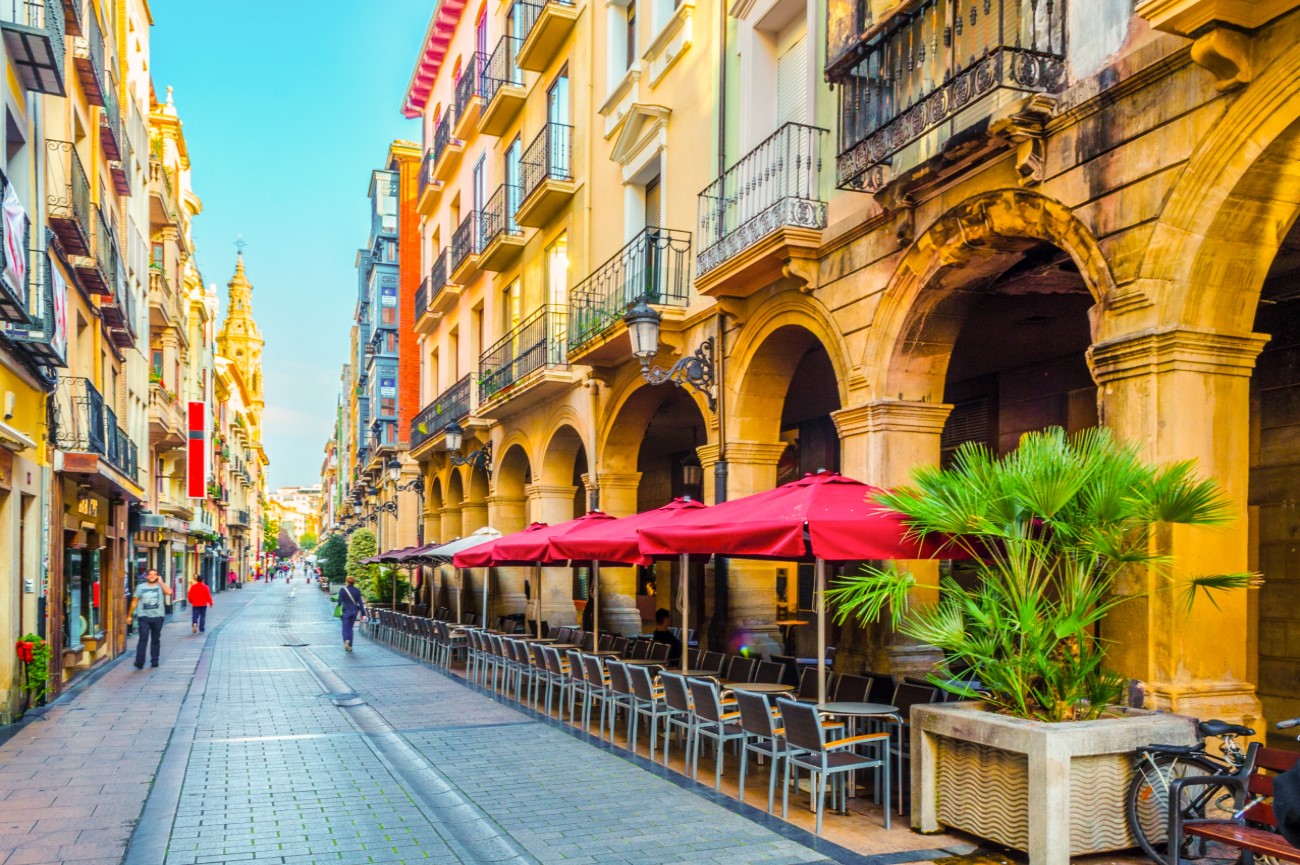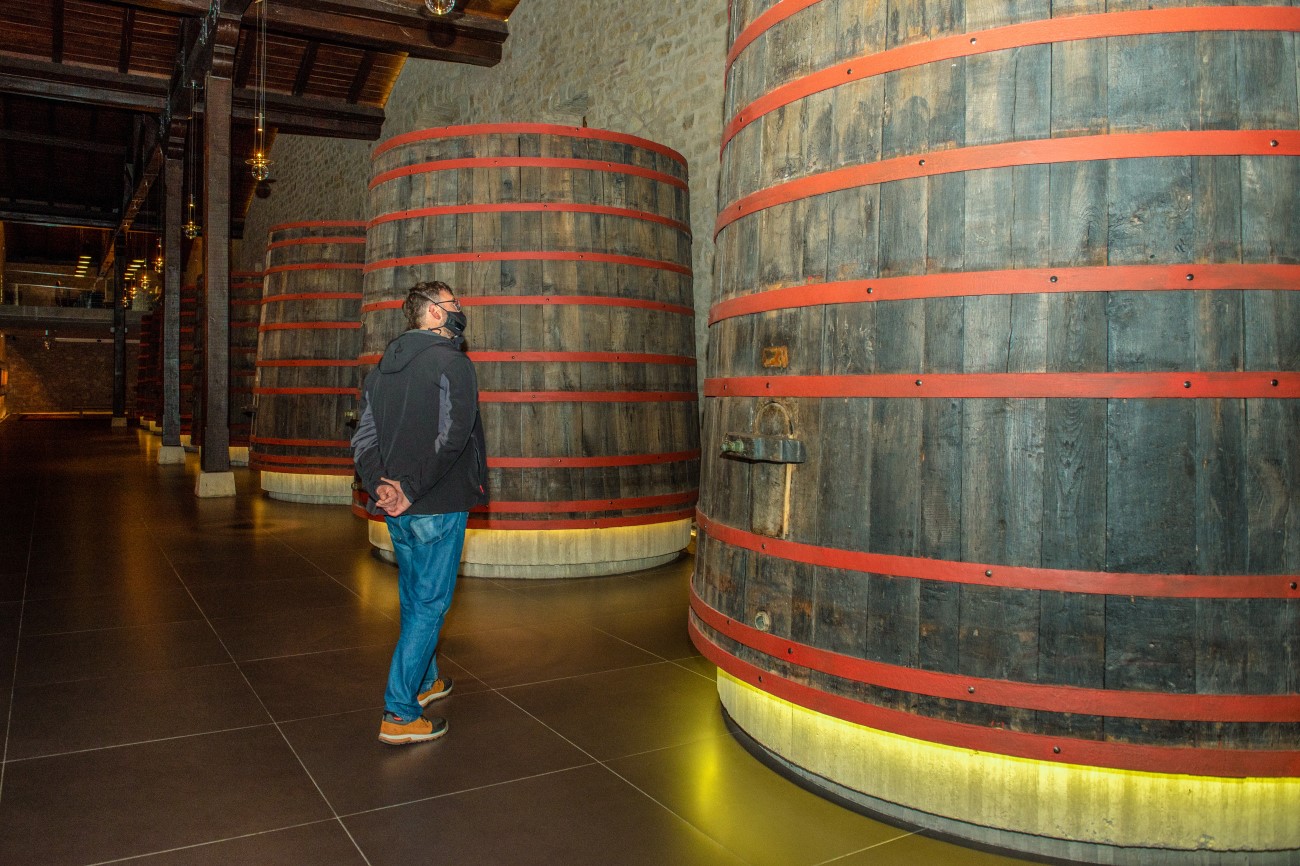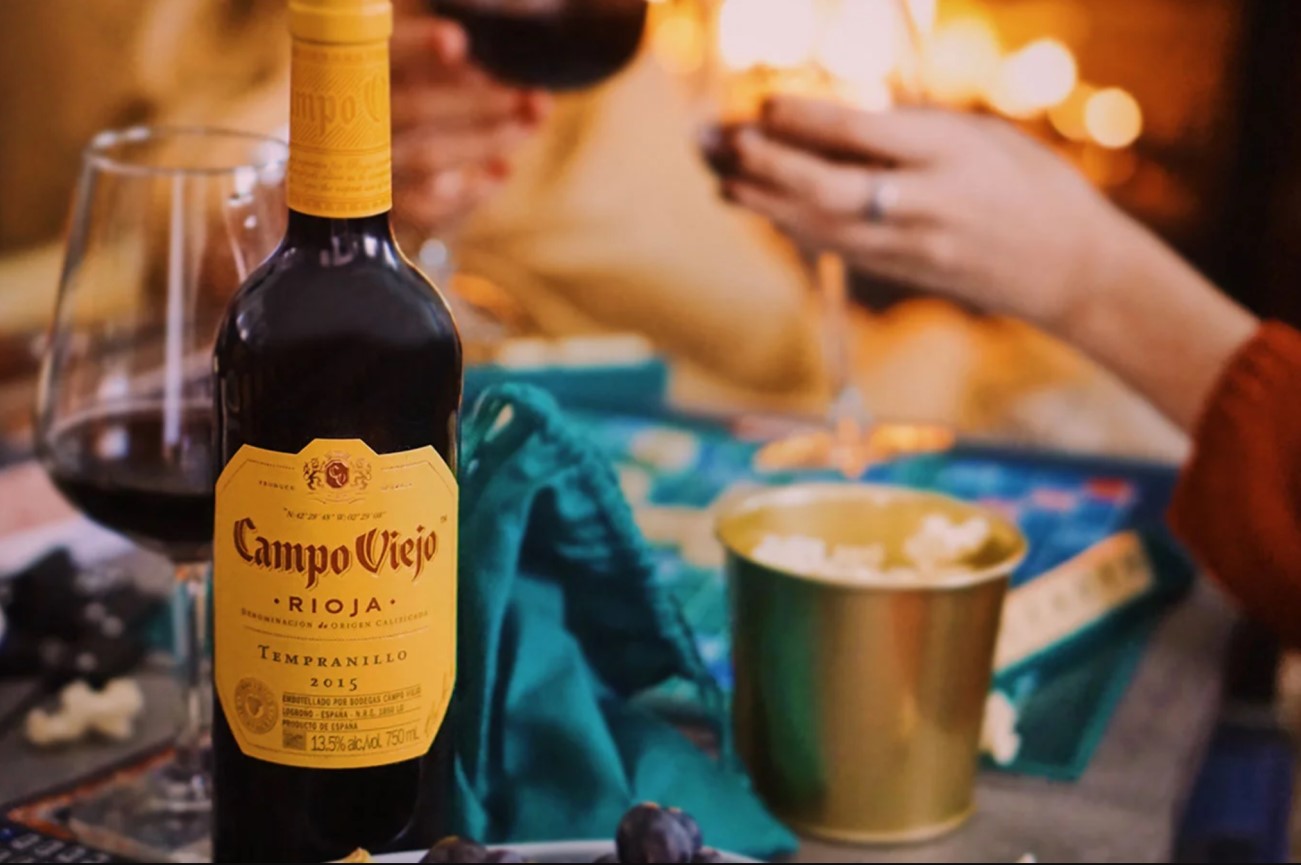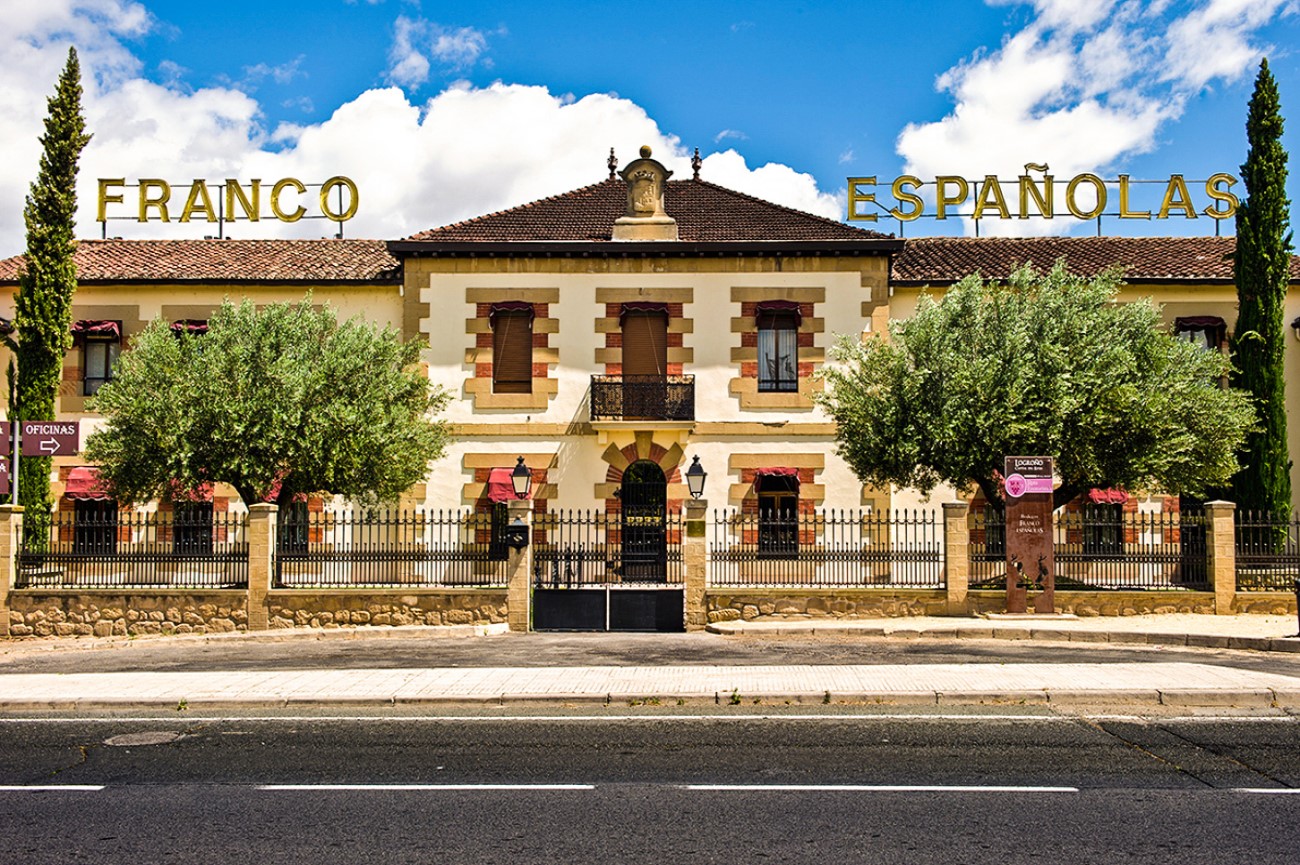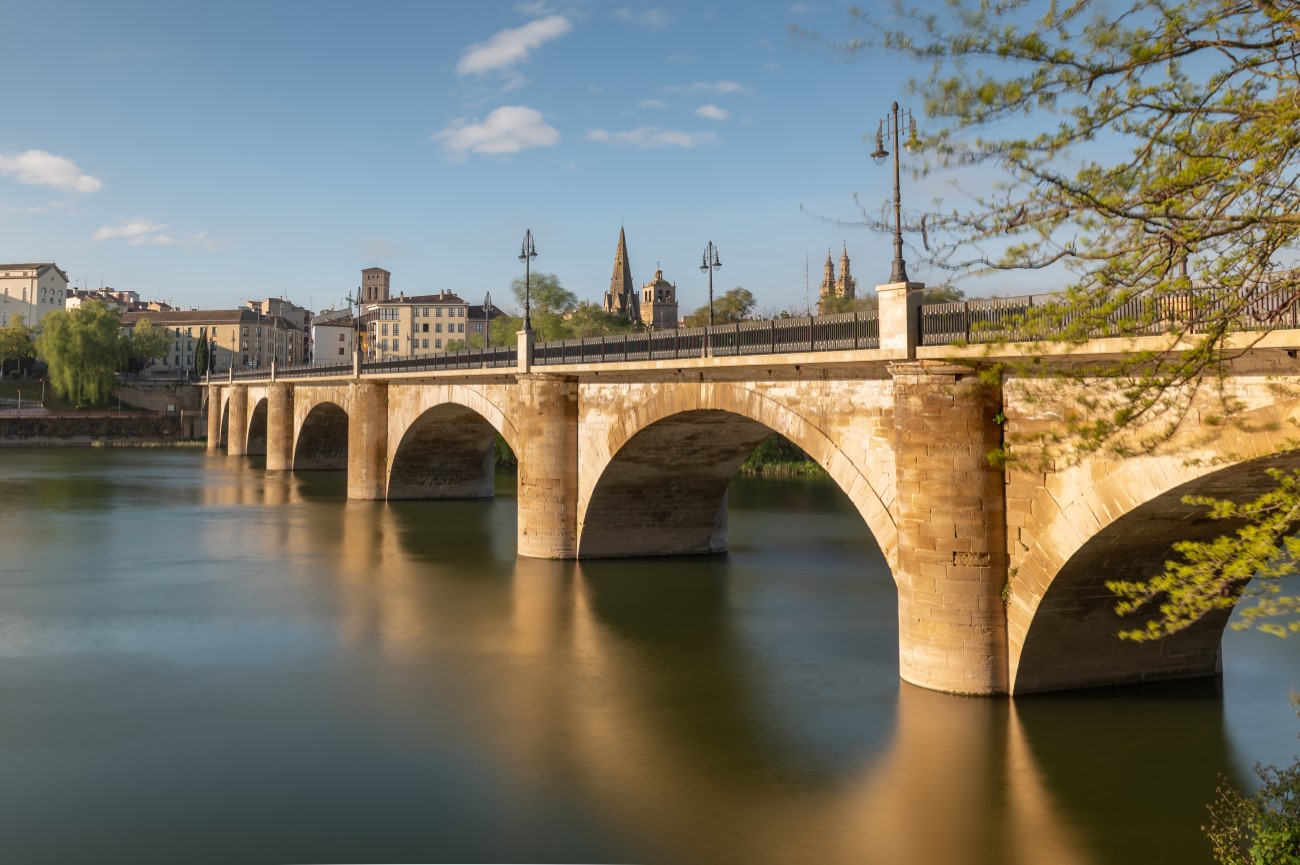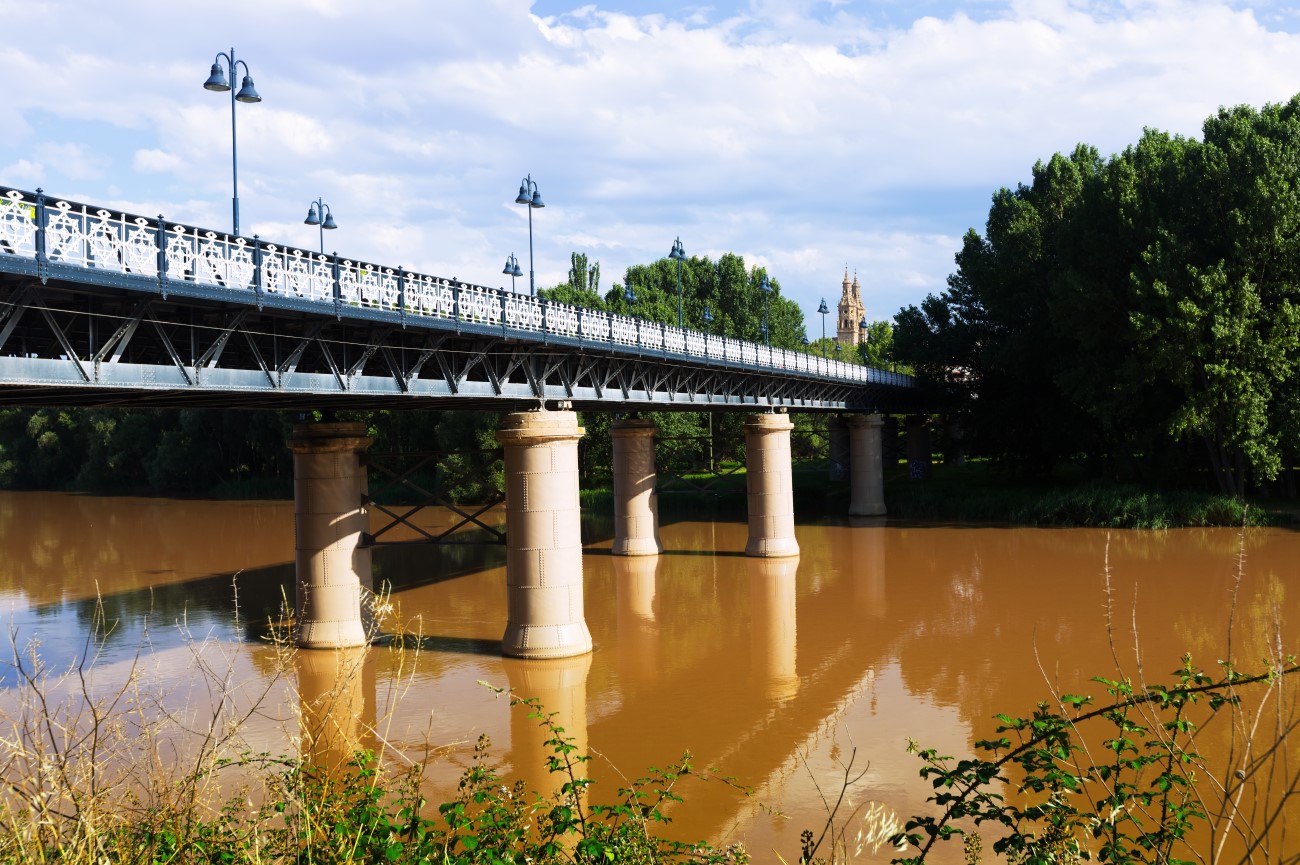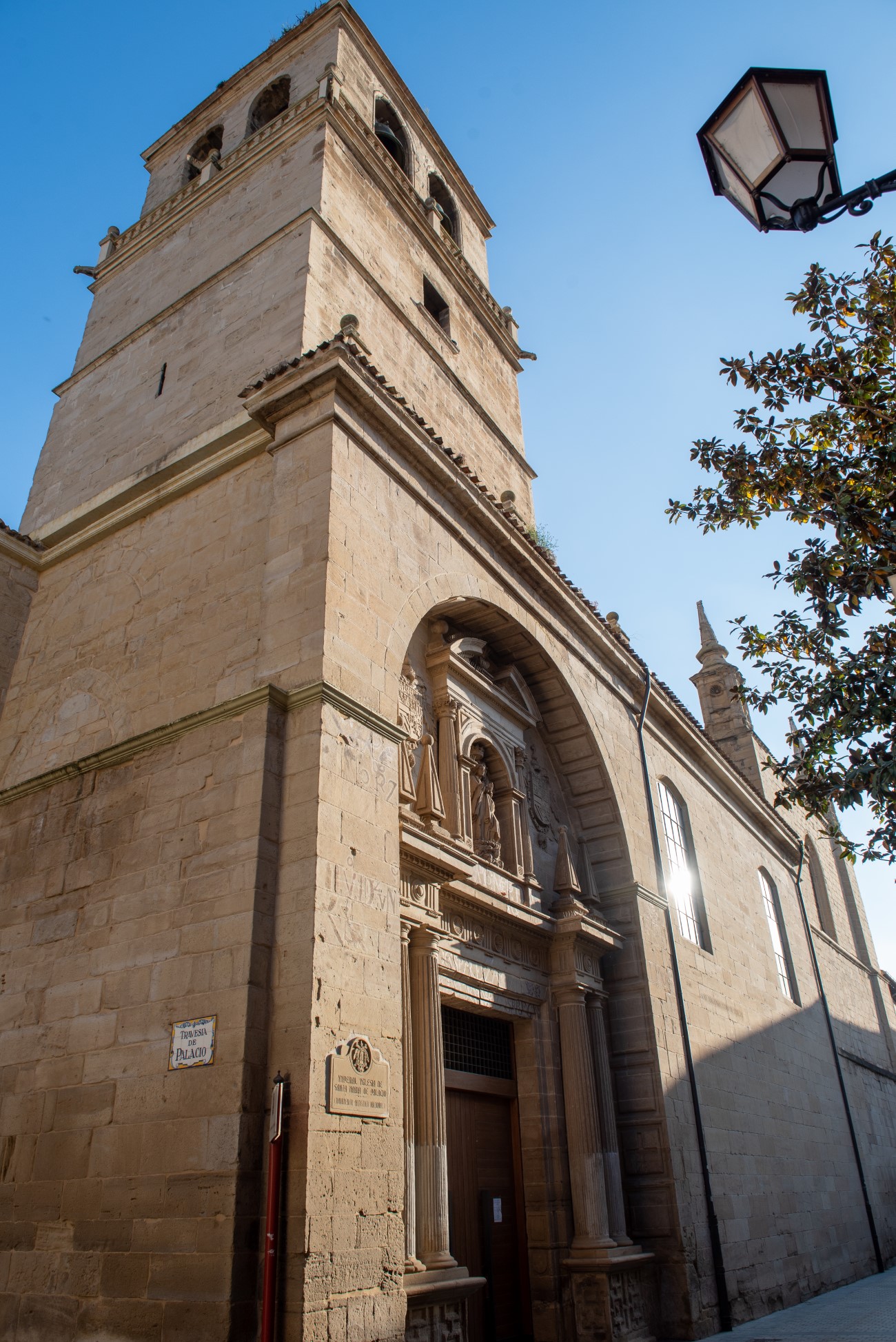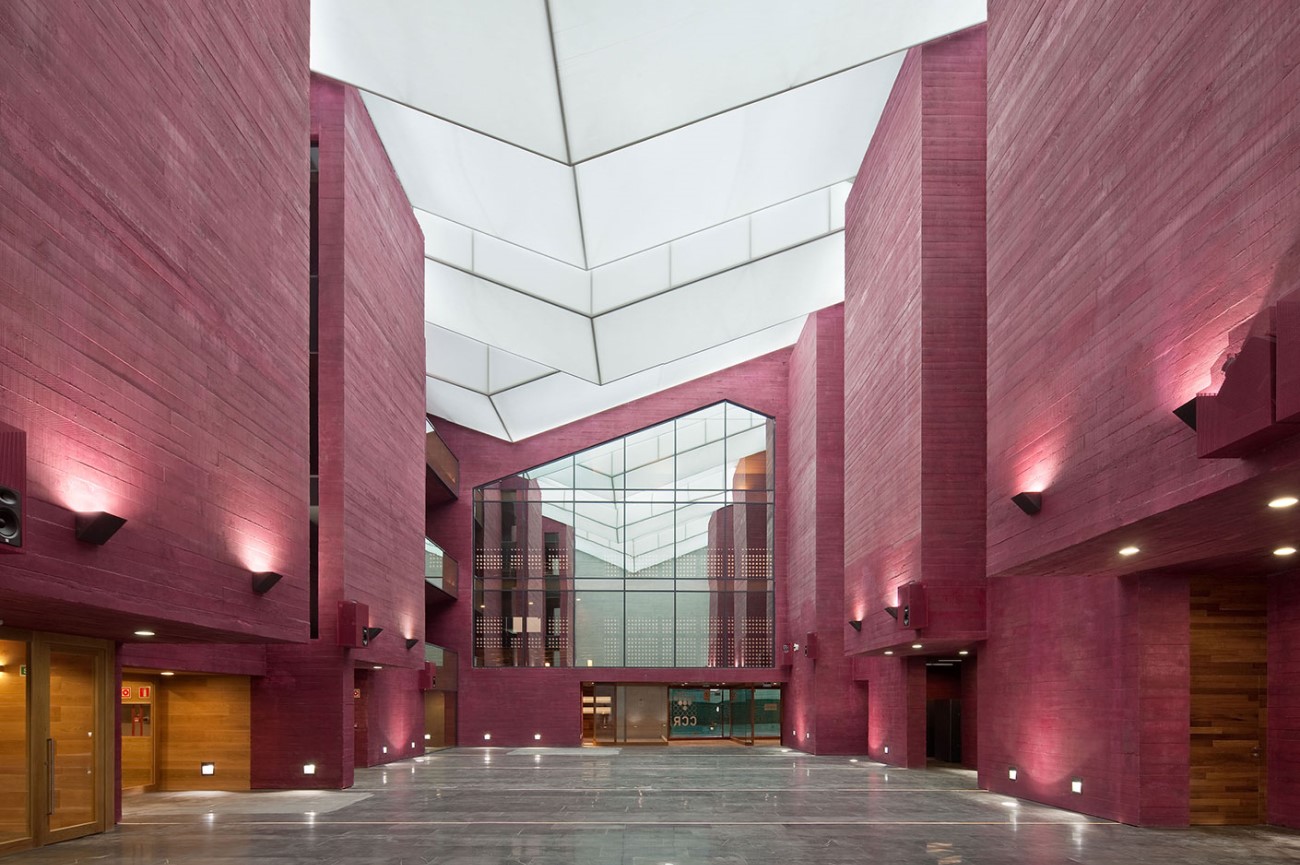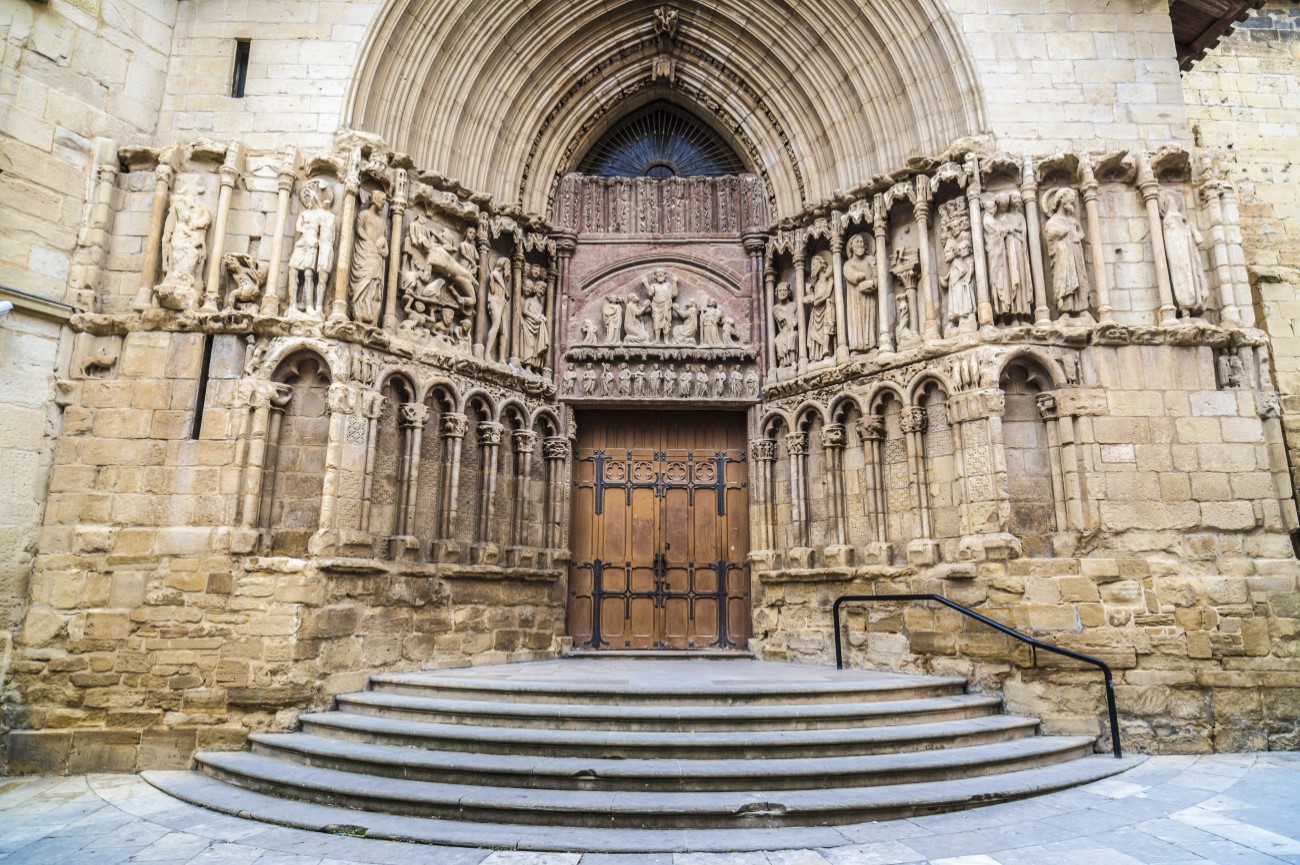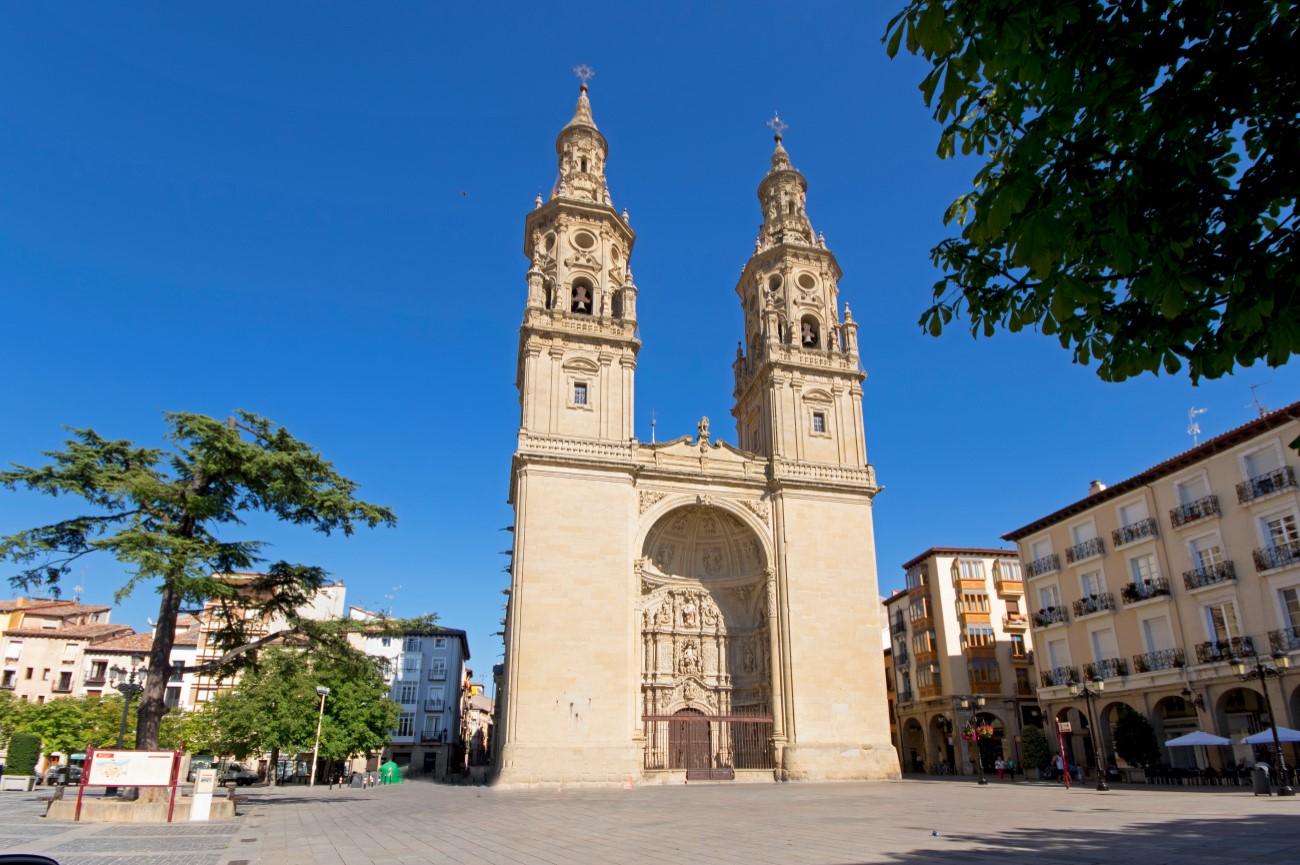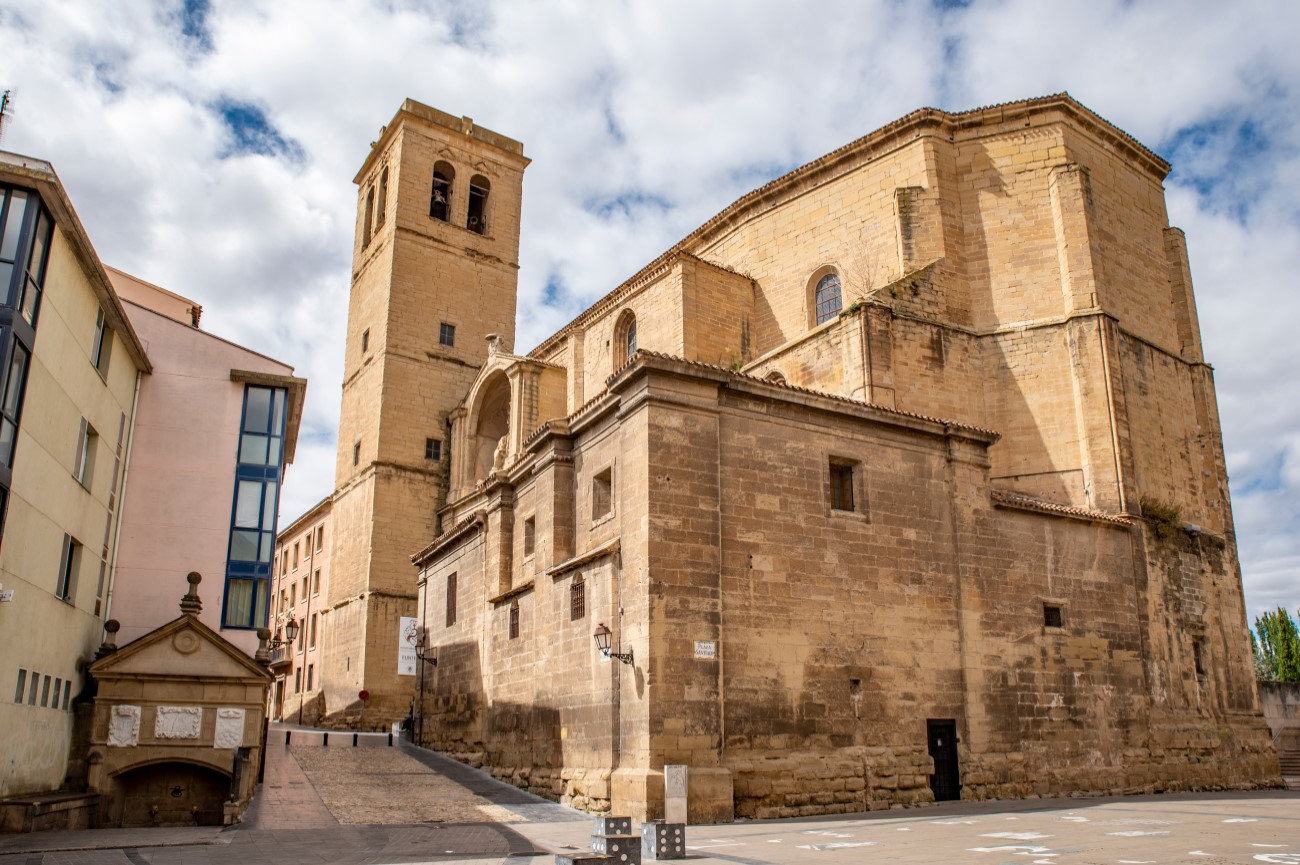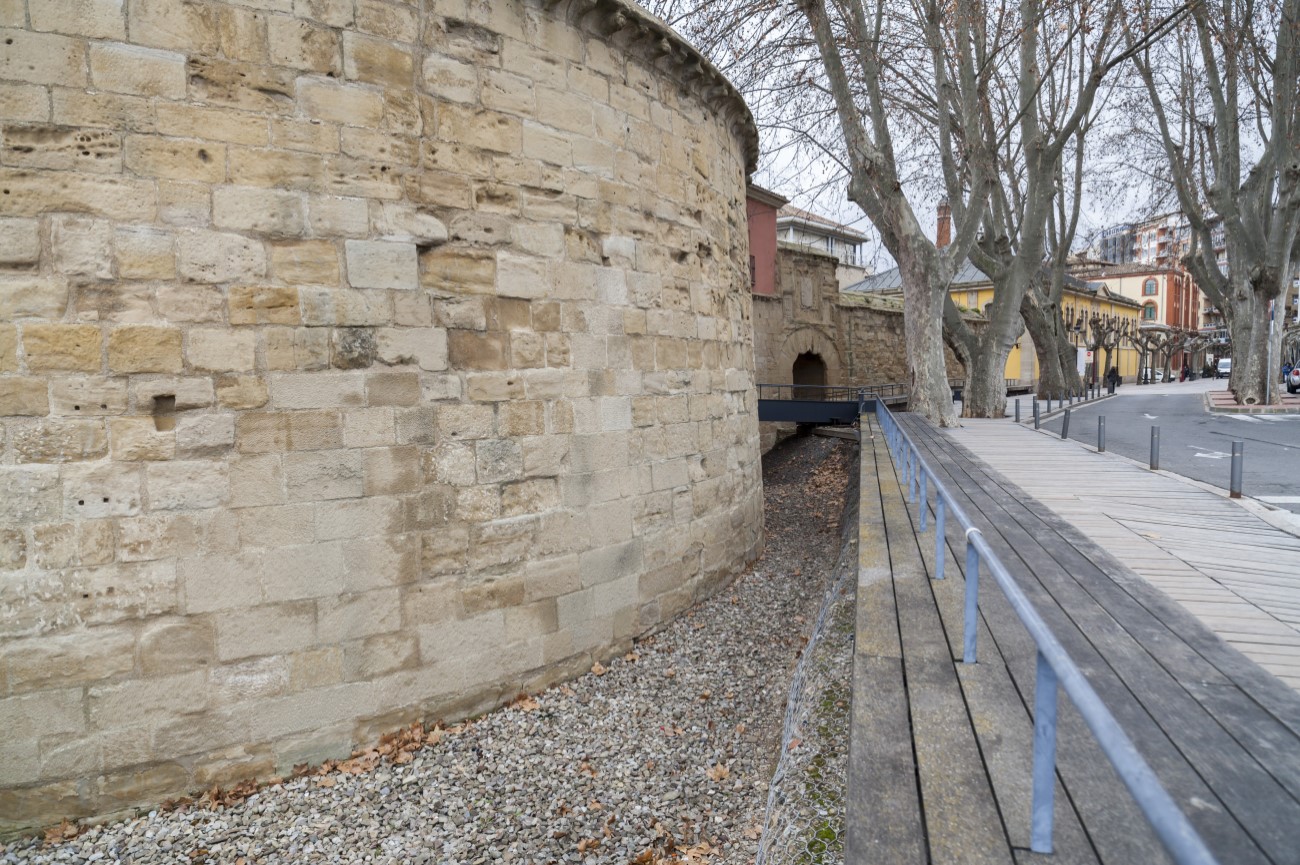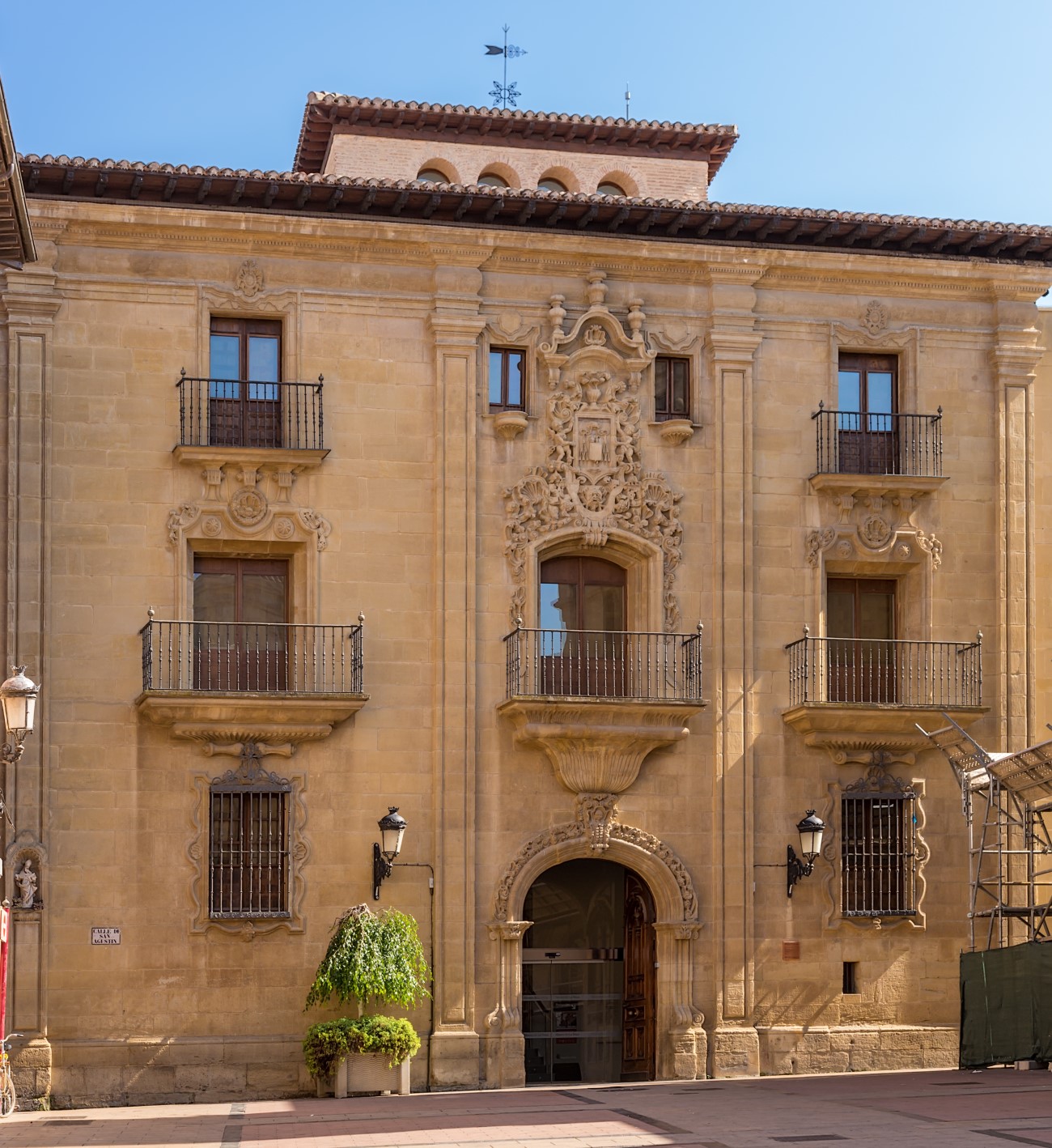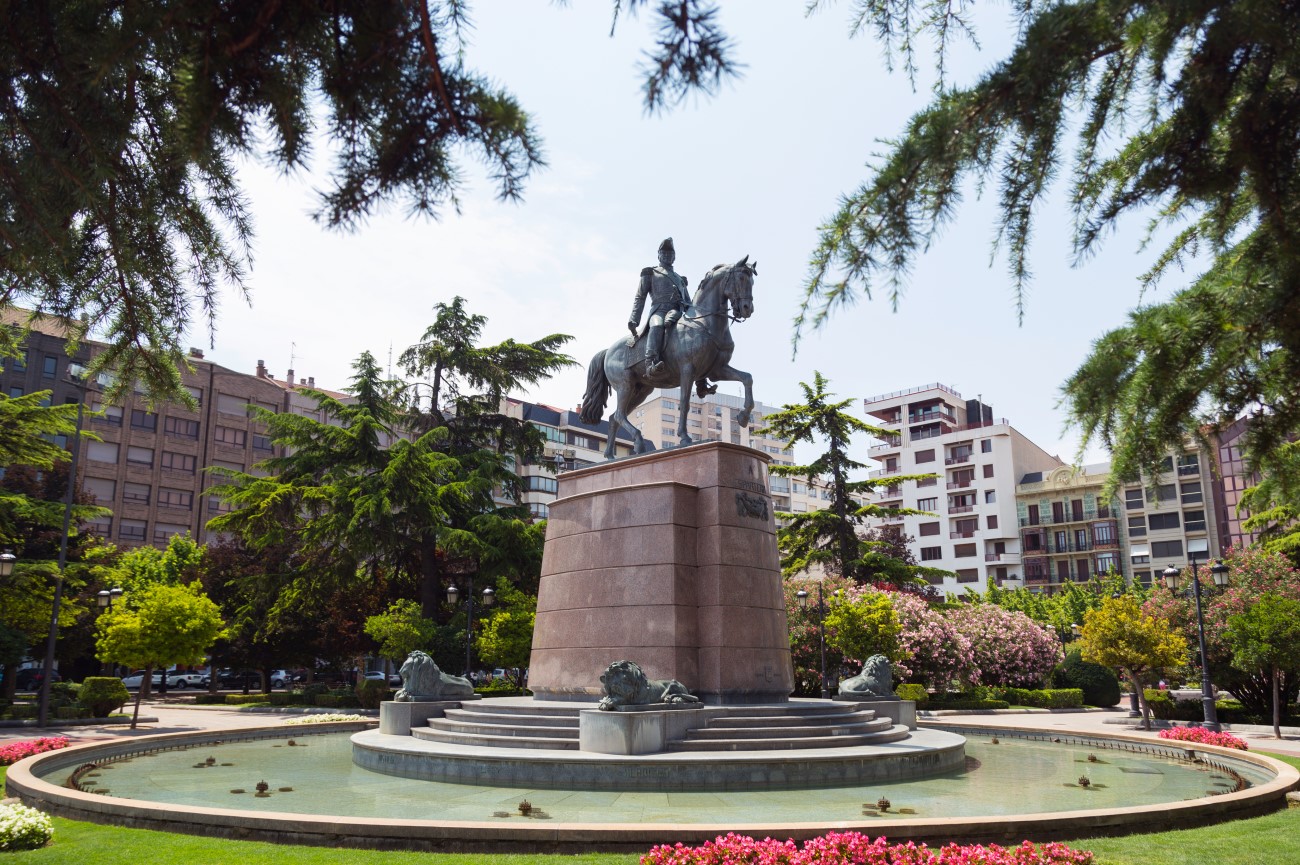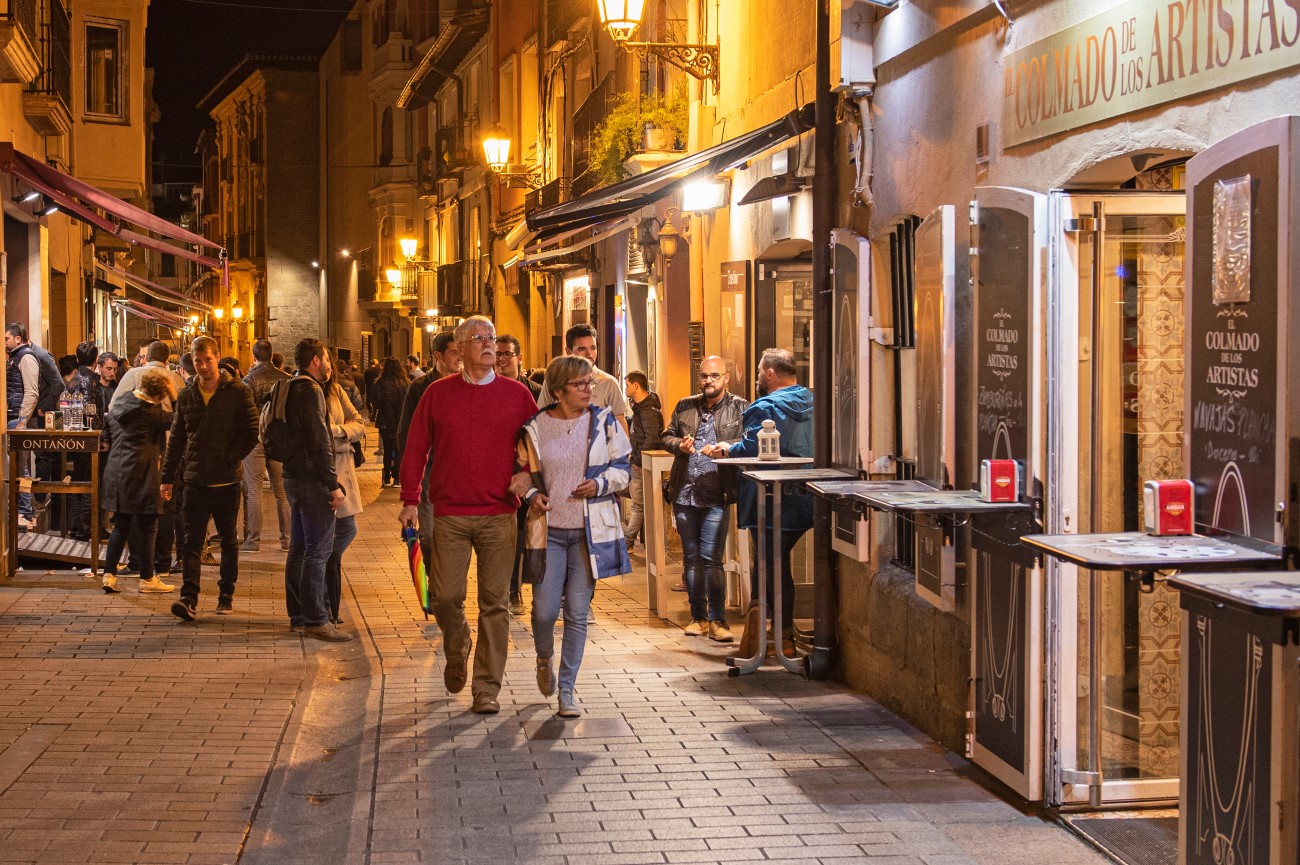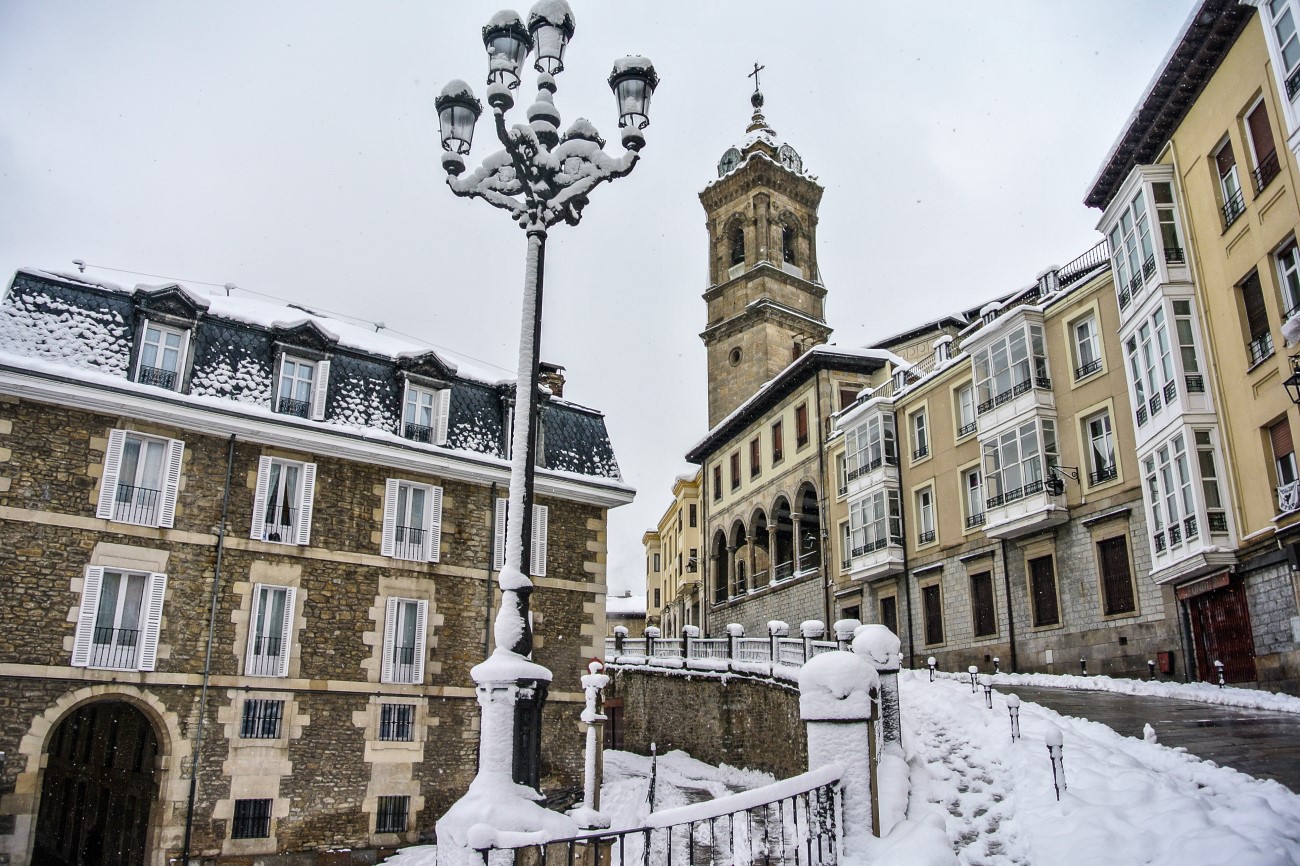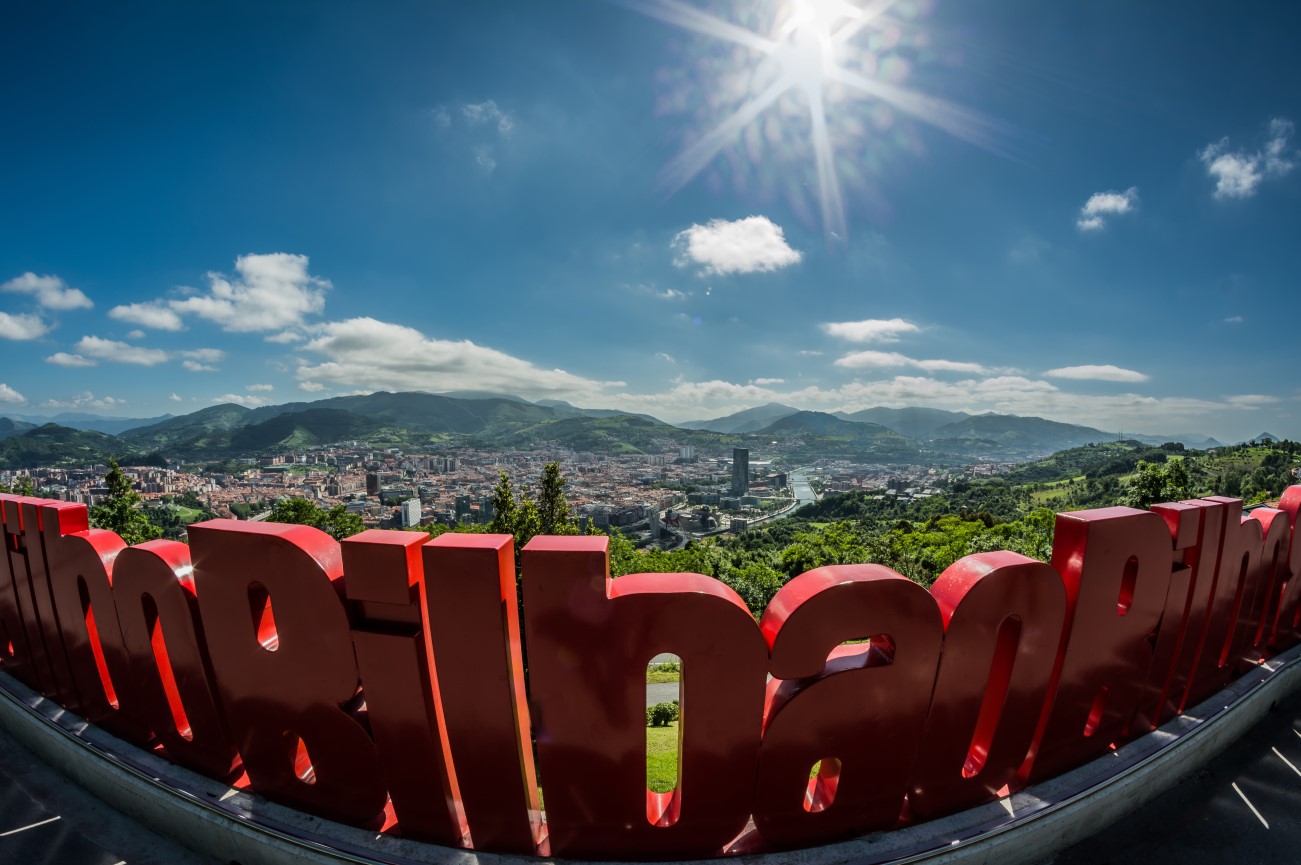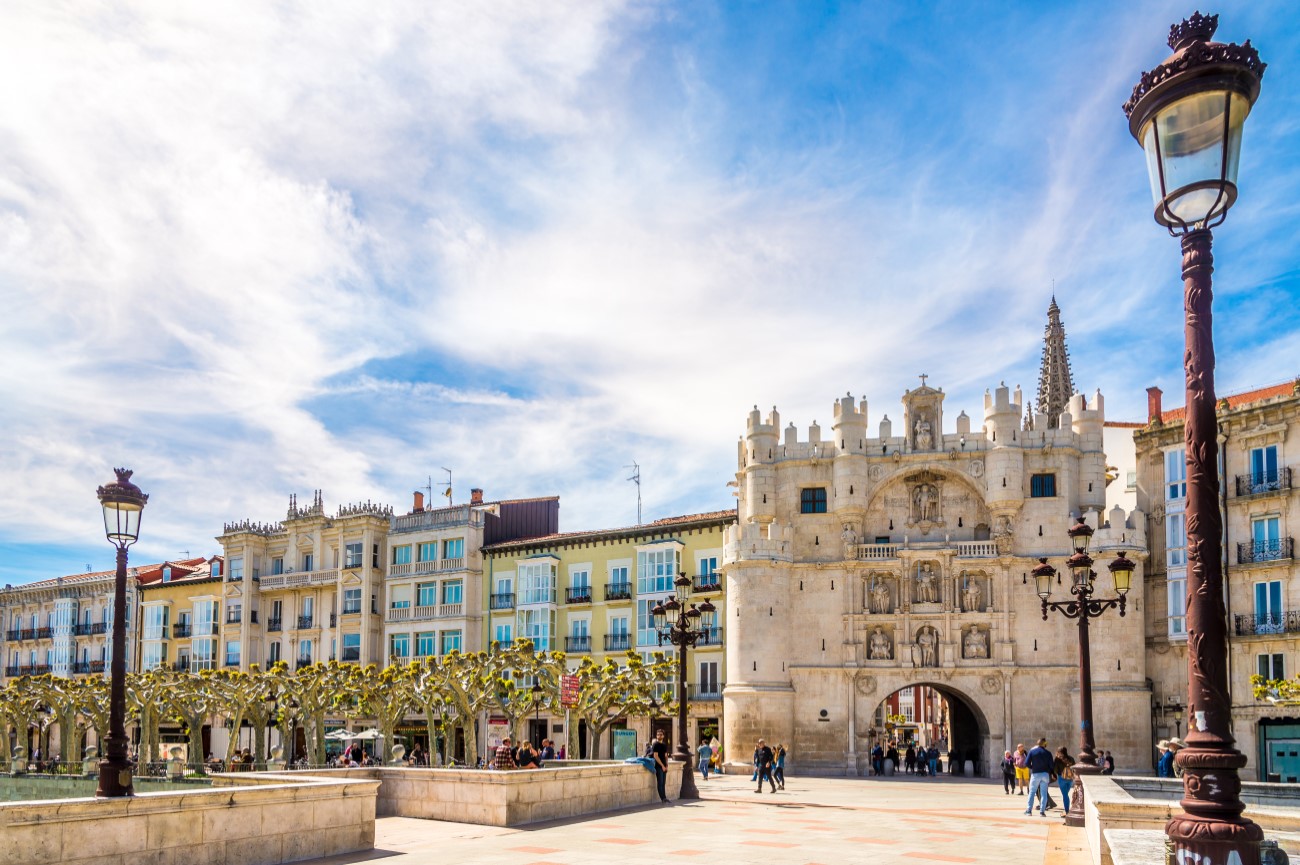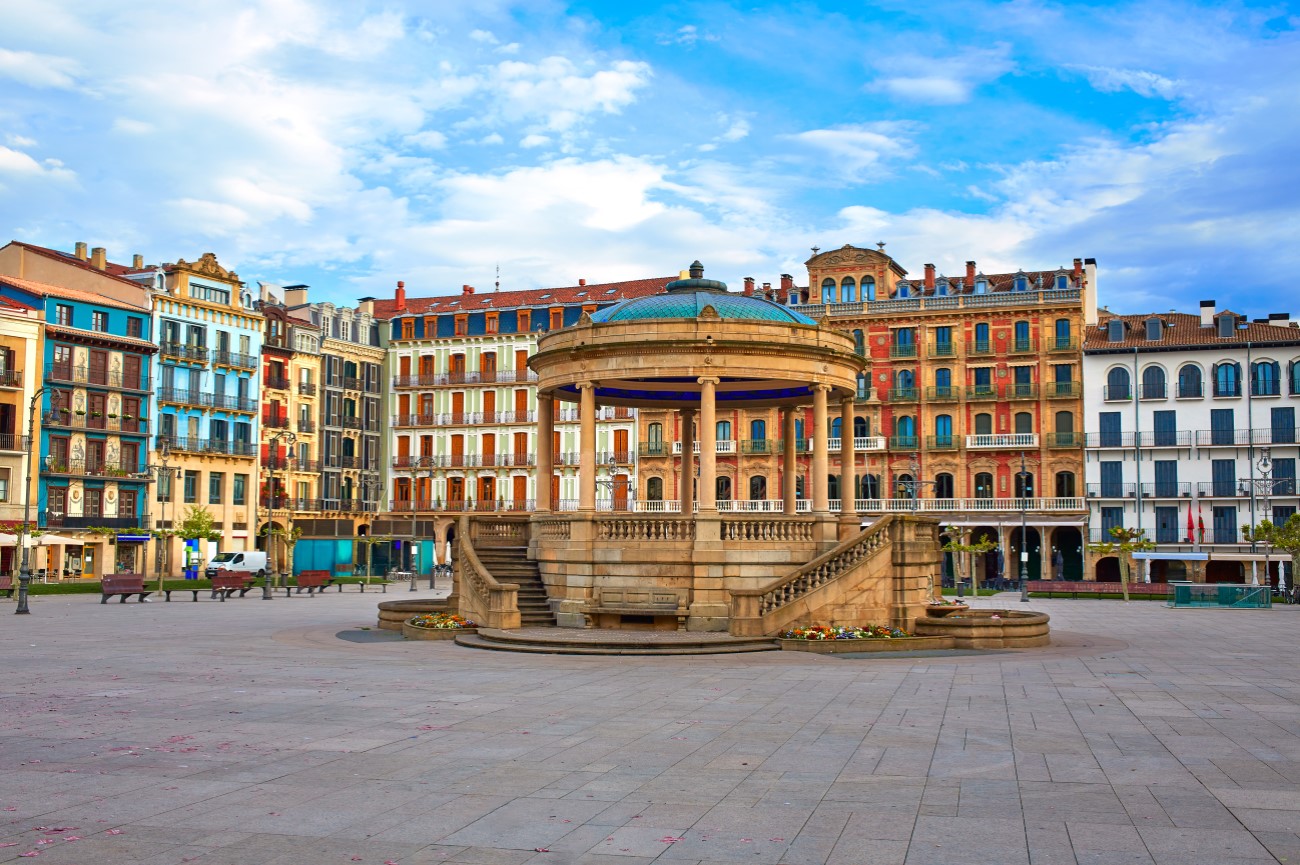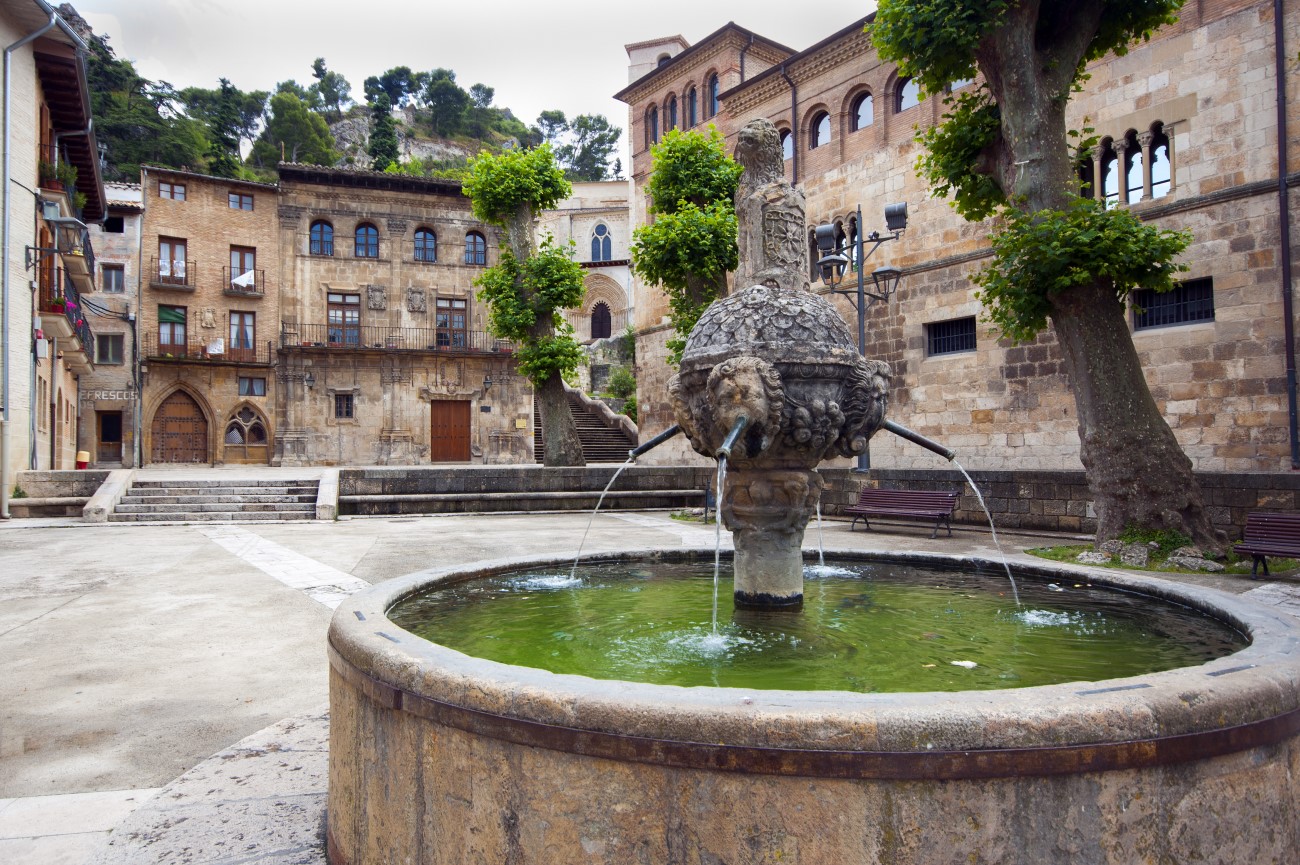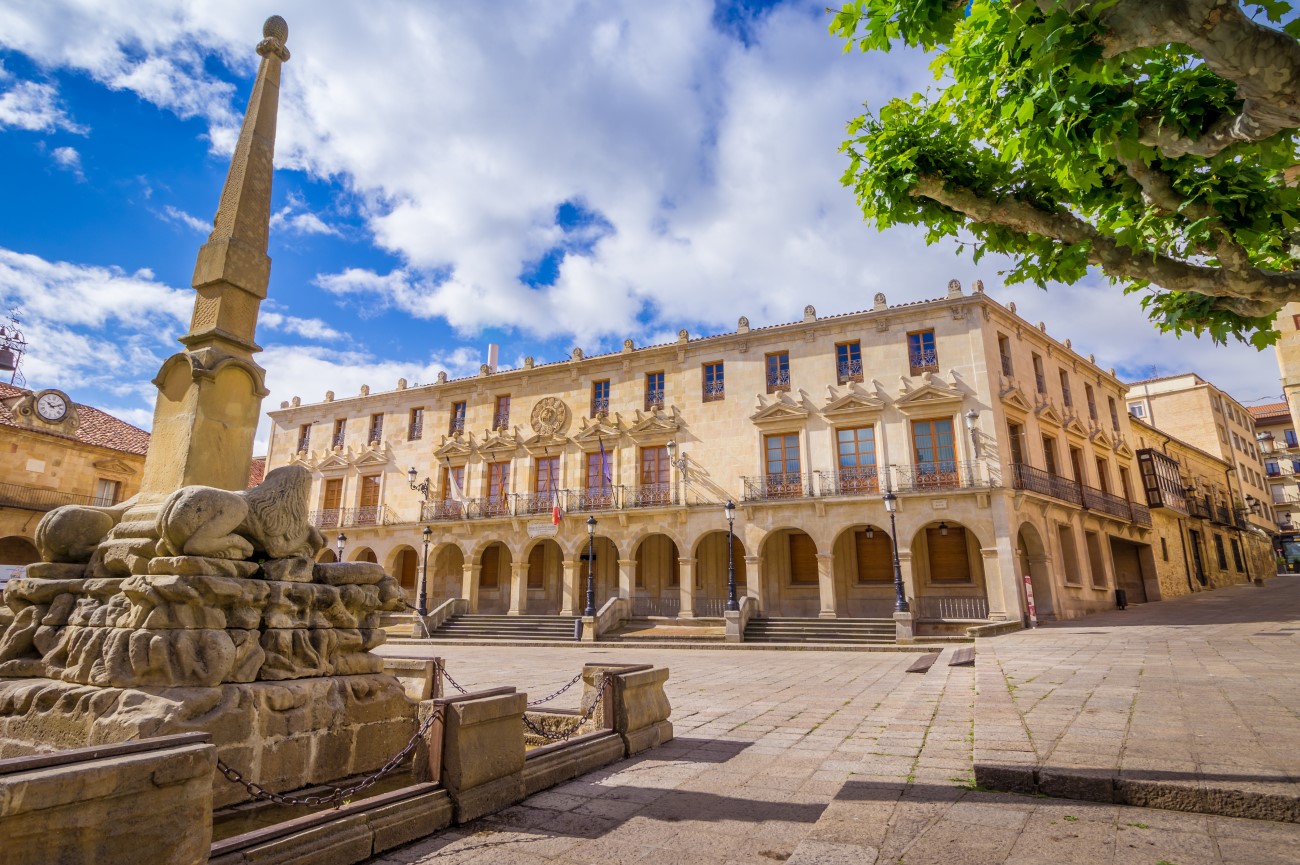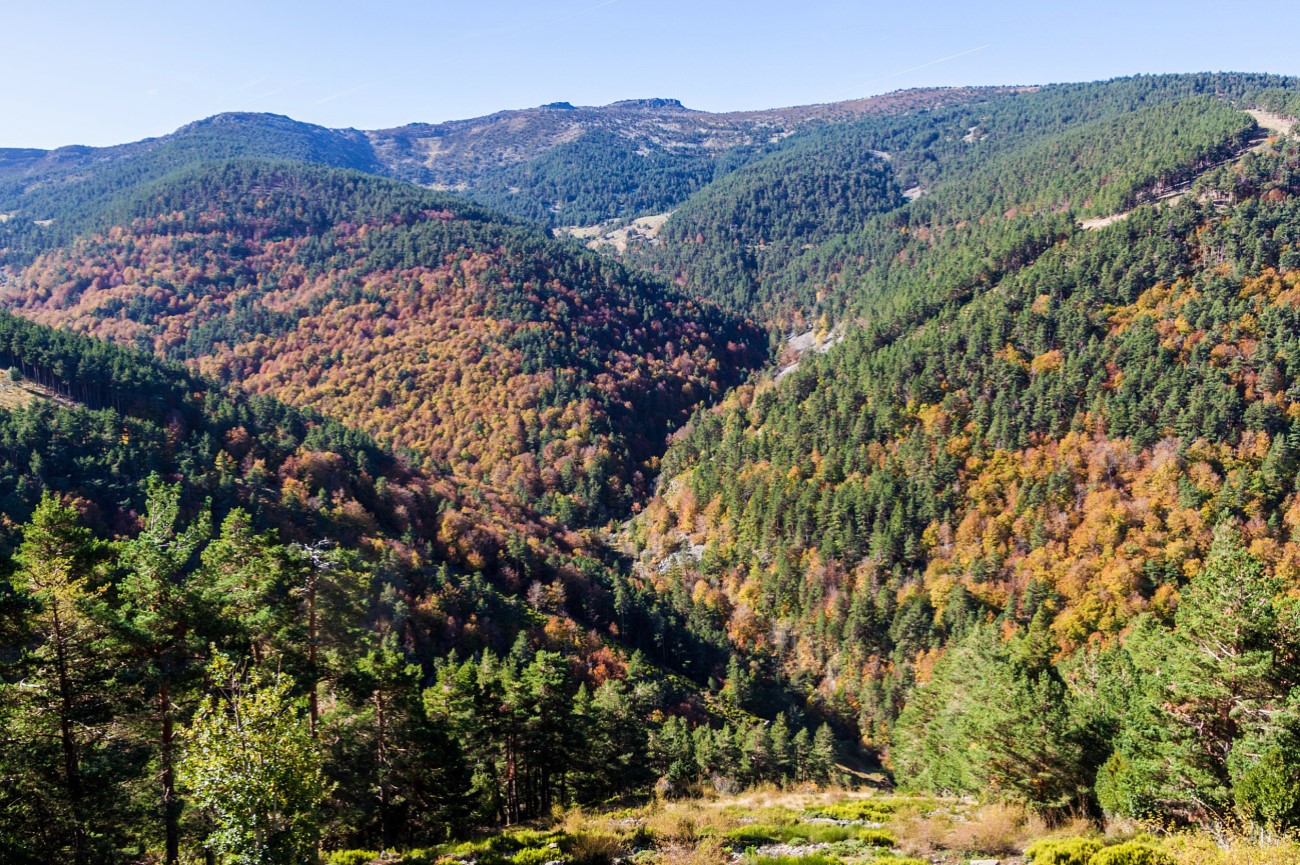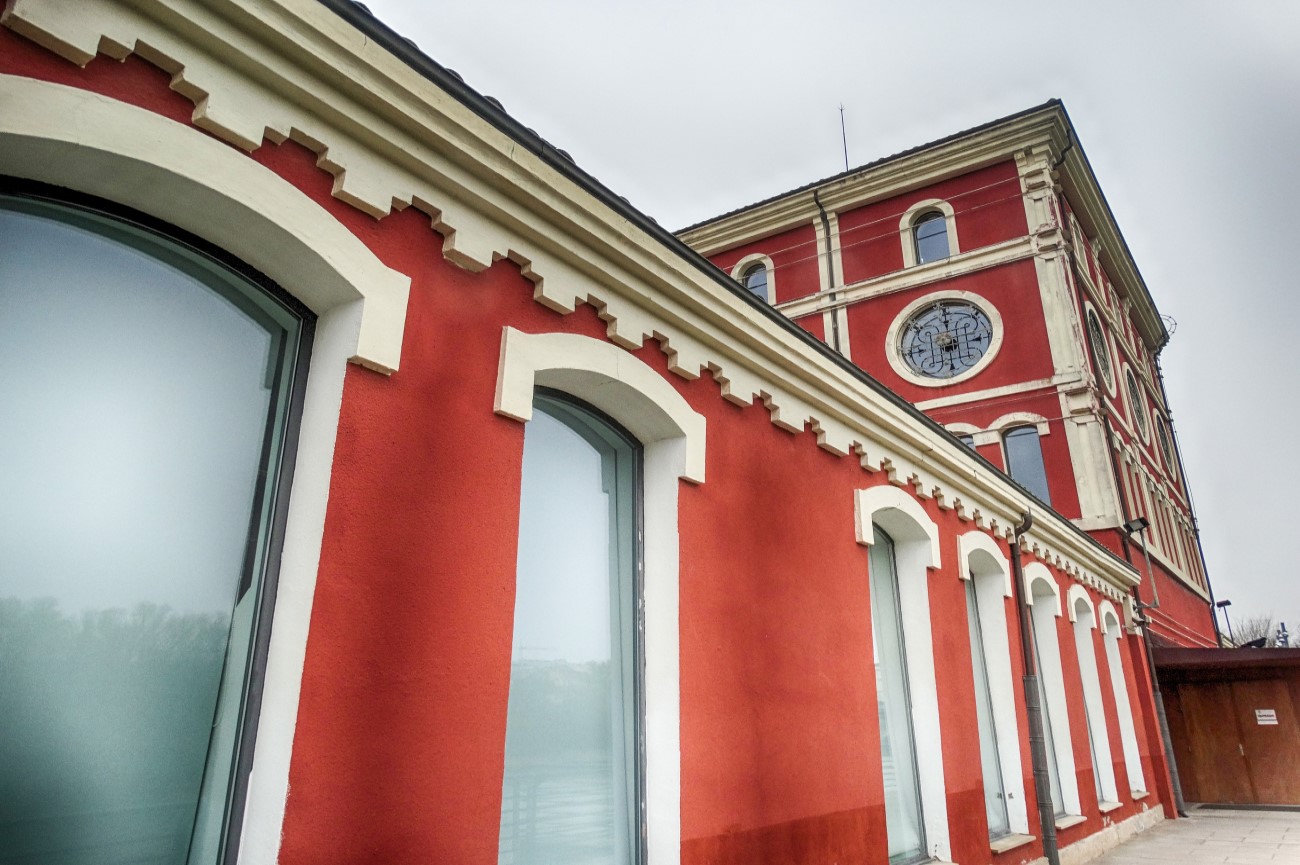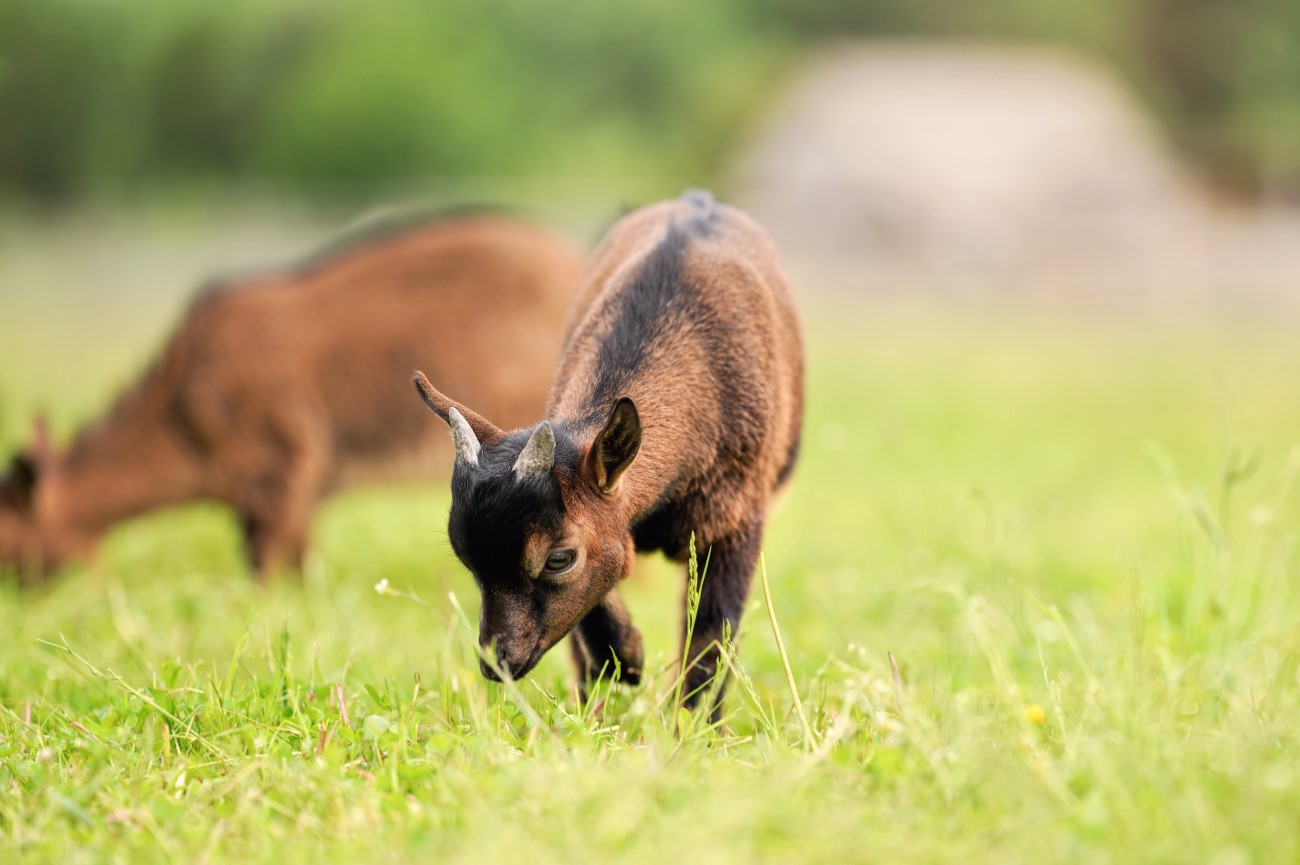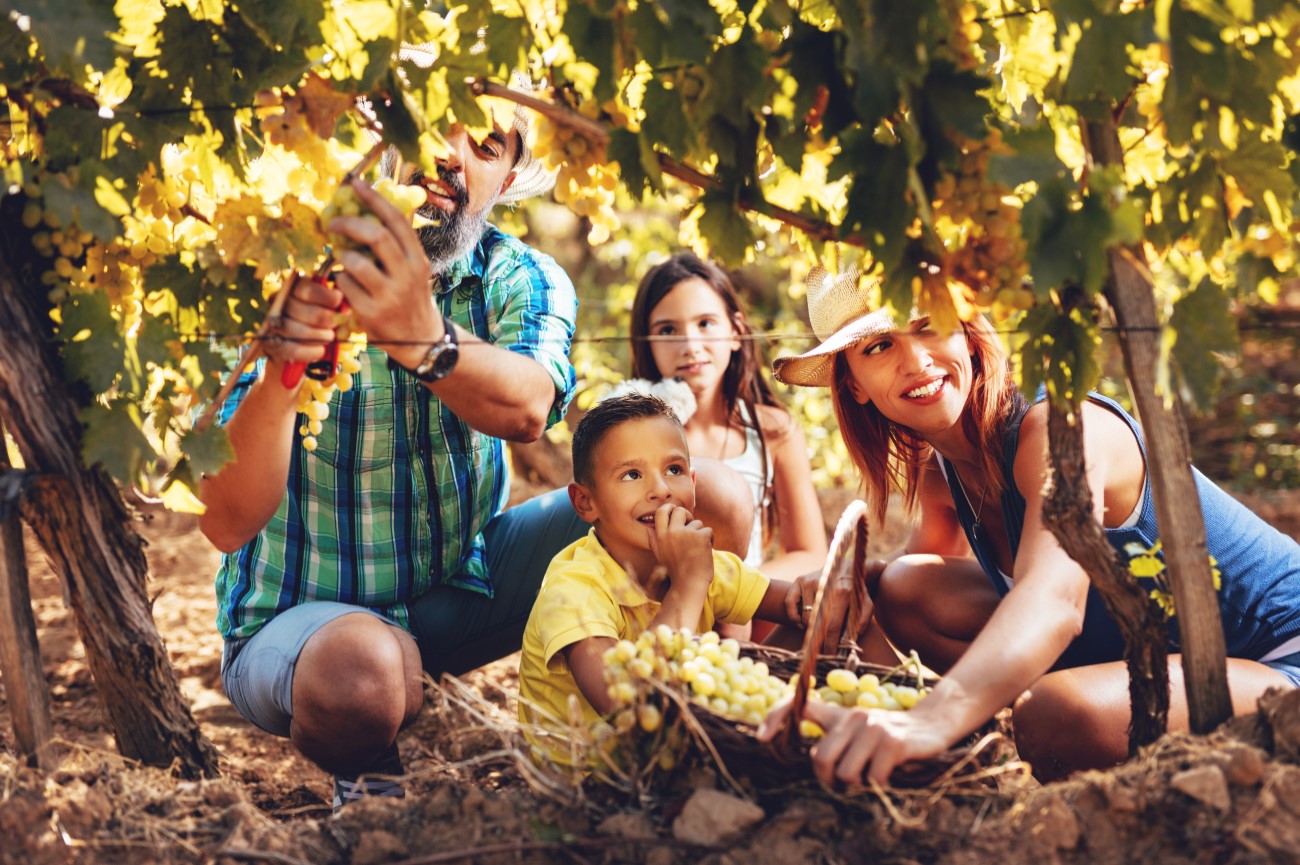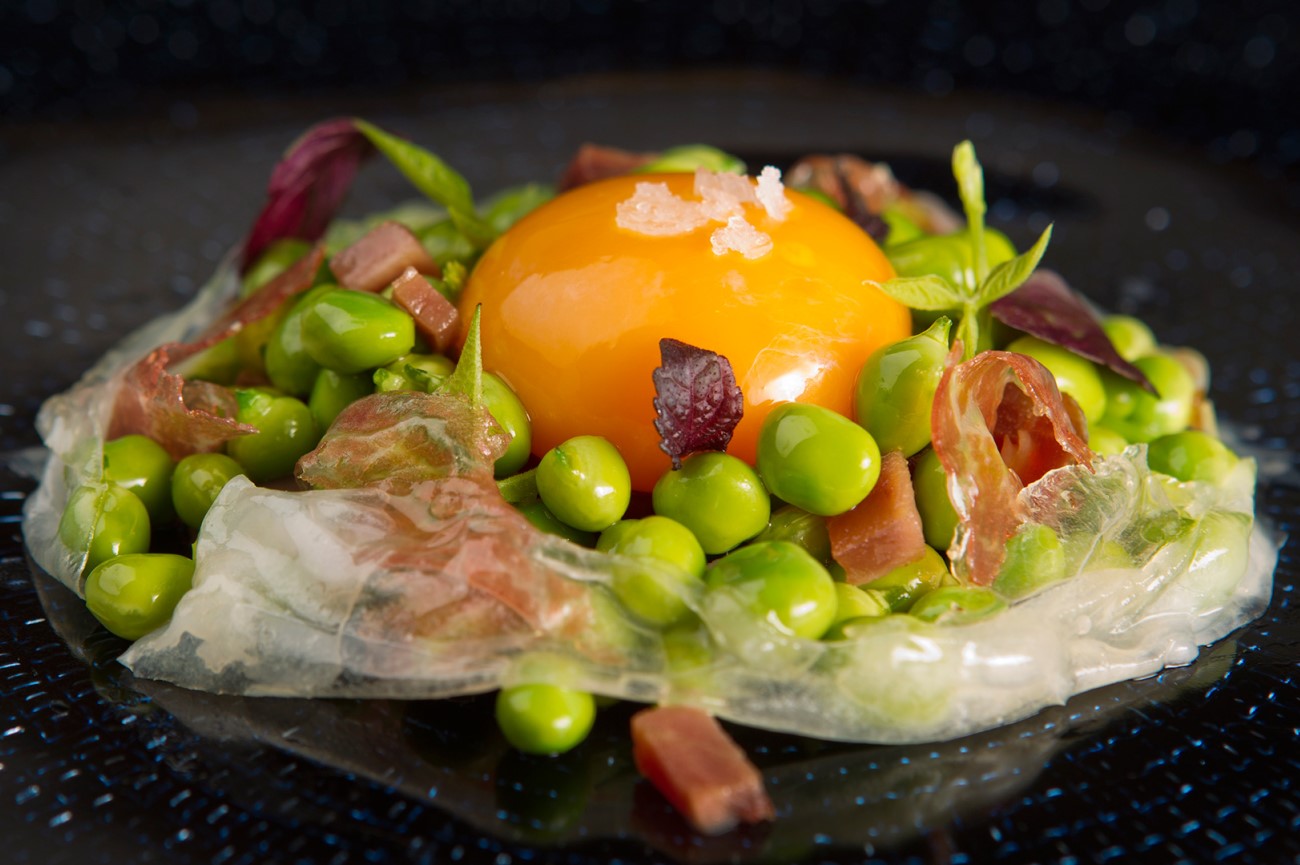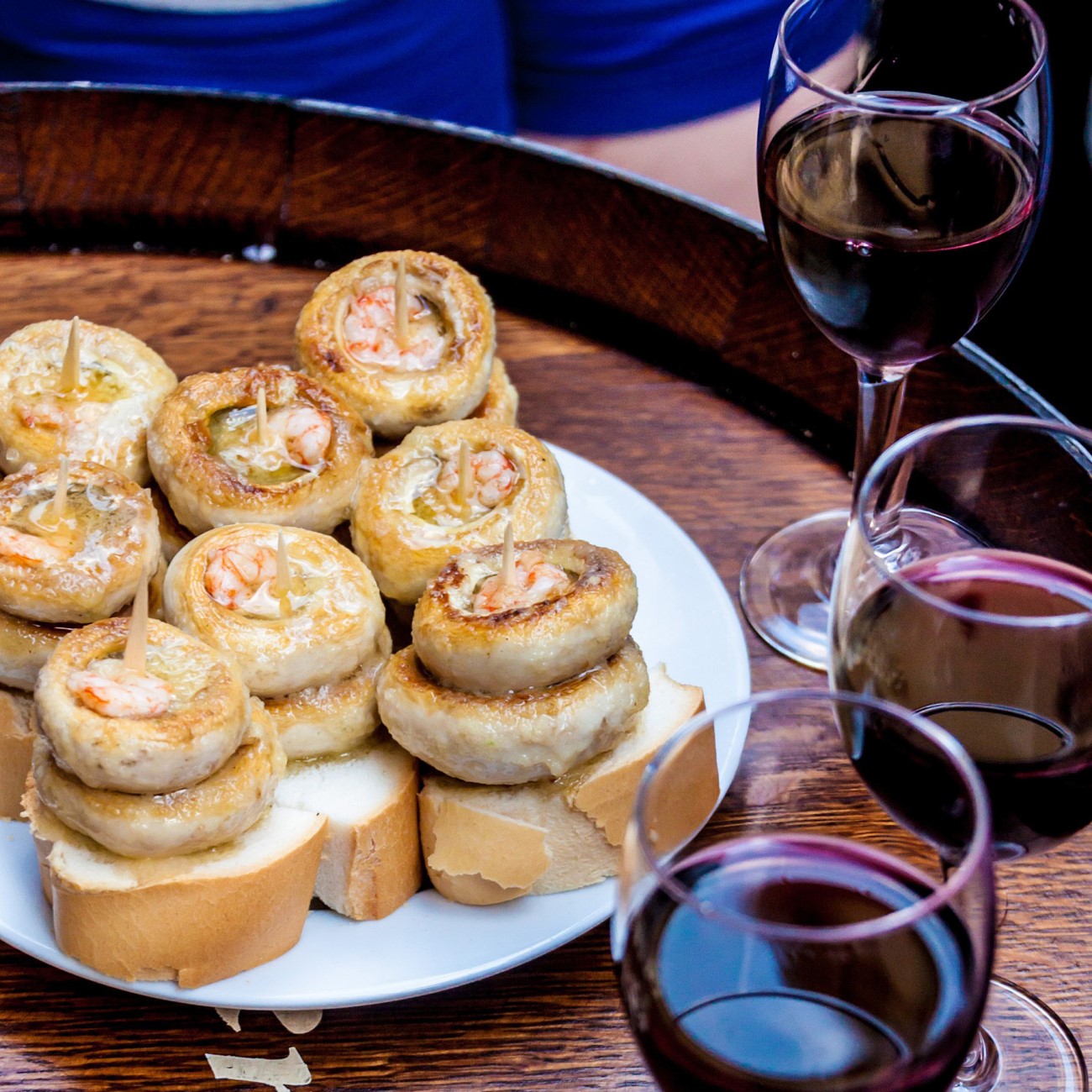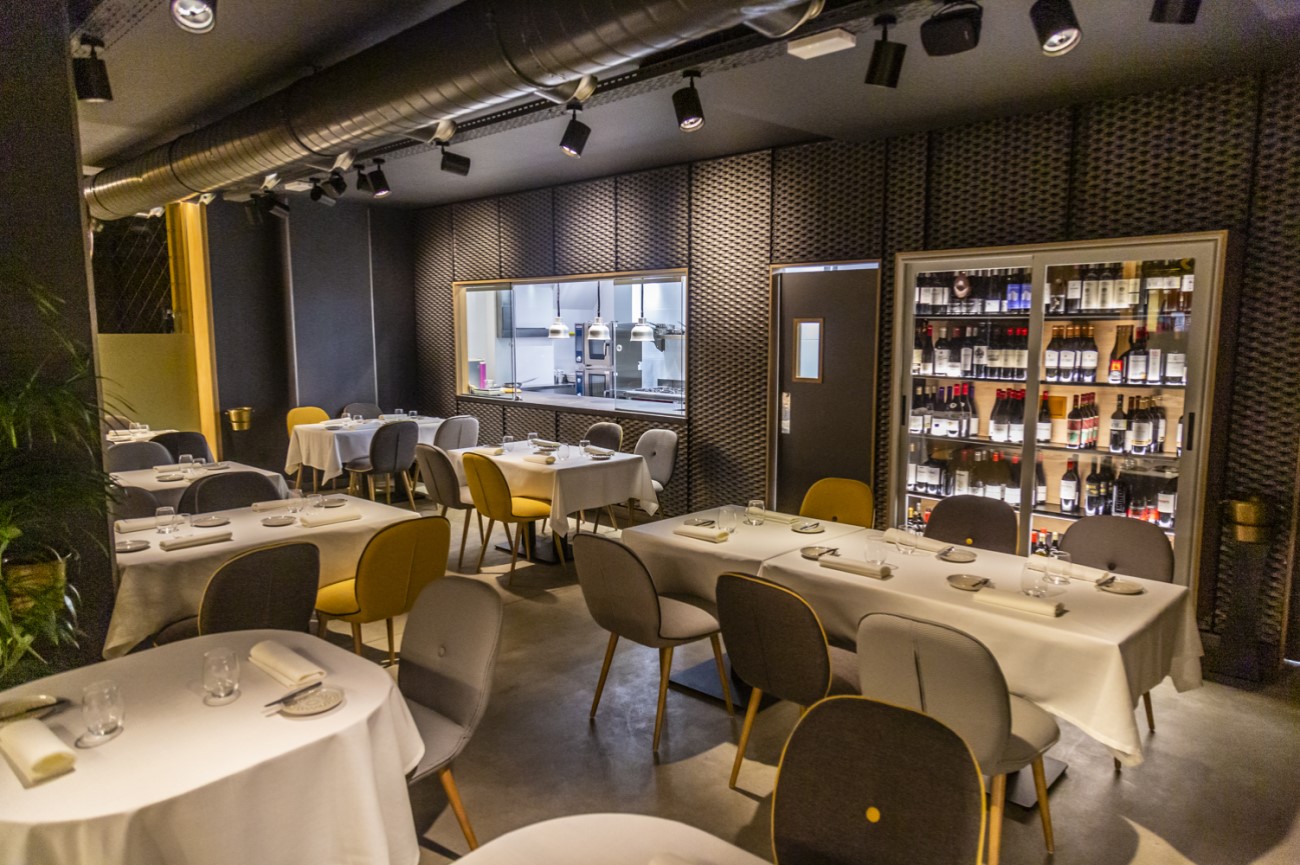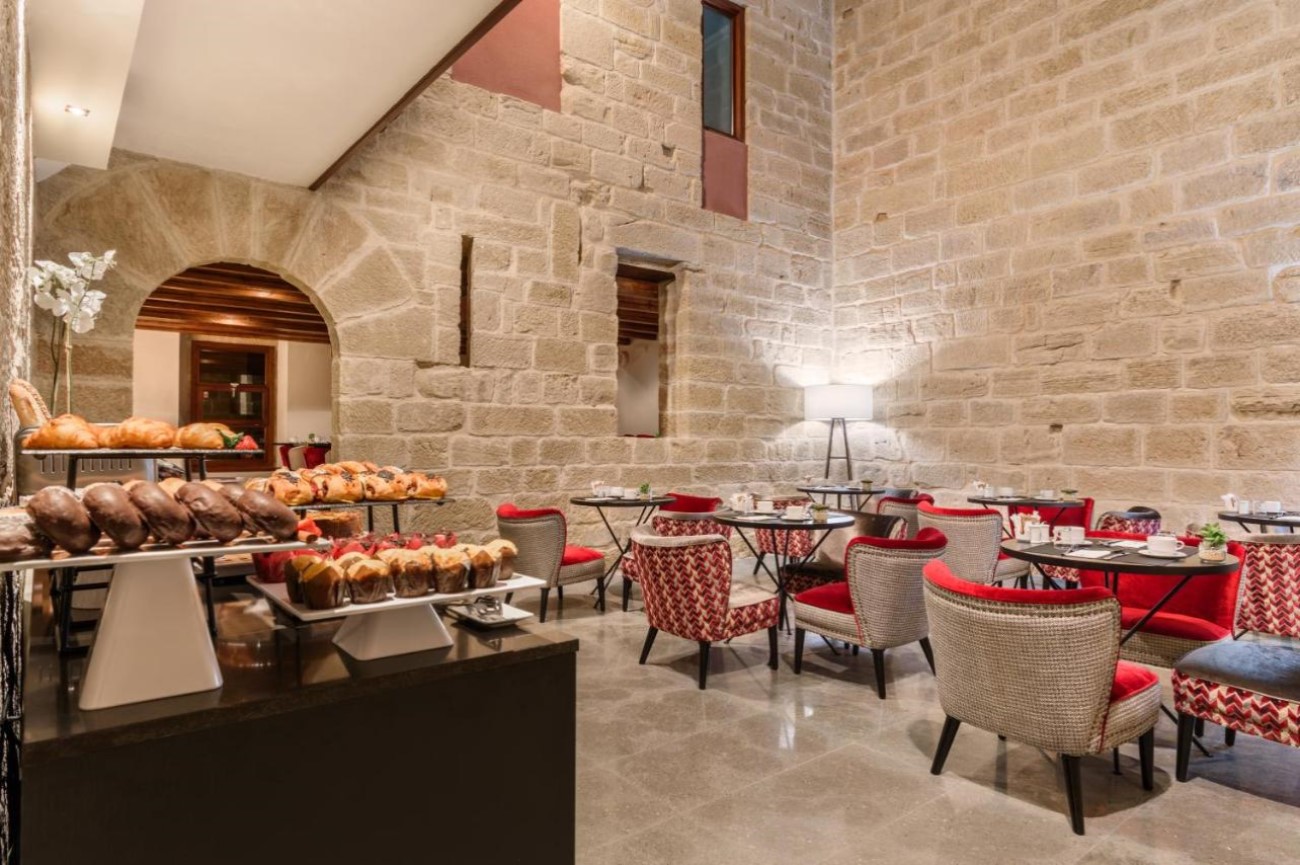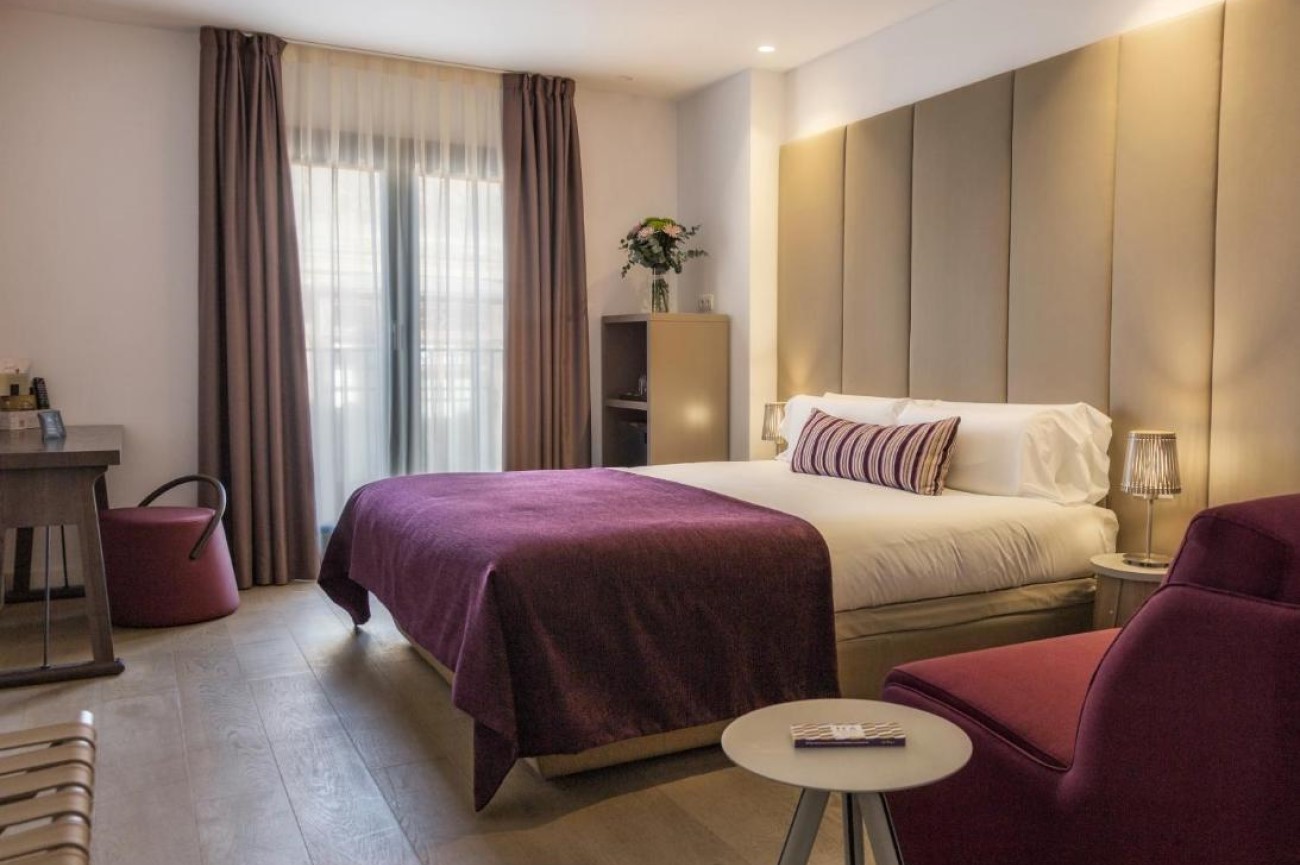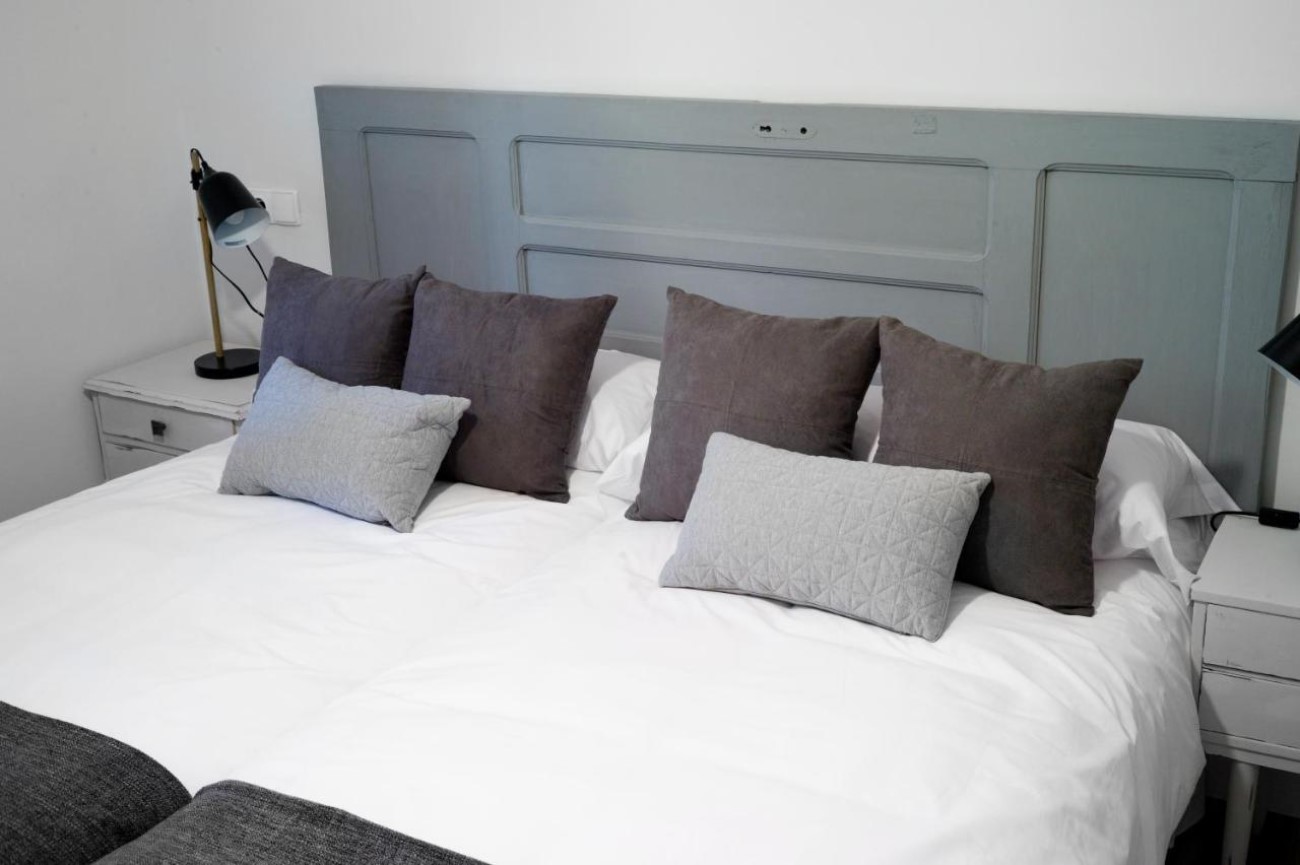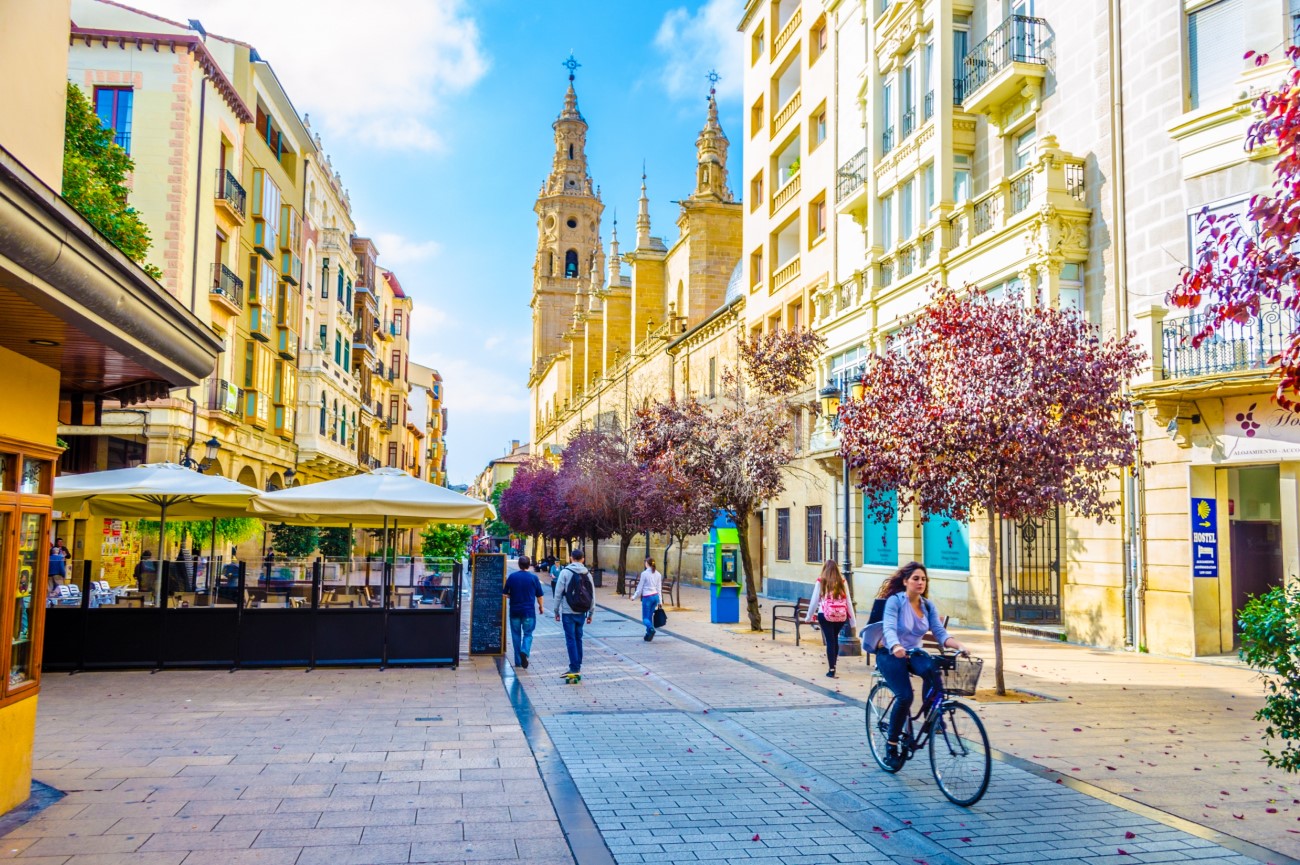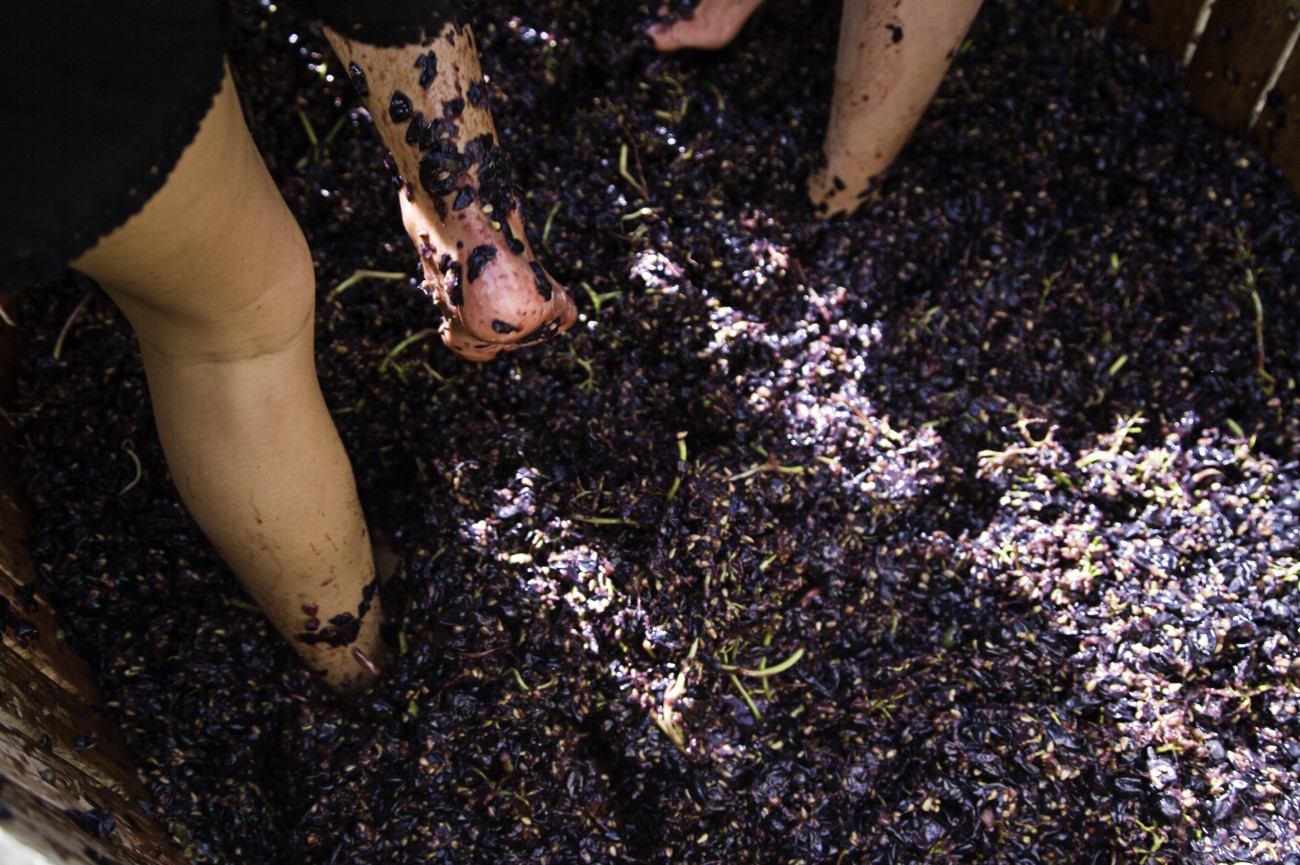Things to do in Logroño, Spain
As the capital of La Rioja, Logroño is the perfect starting point to explore this glorious wine region. Many visitors stop here on their way to Santiago de Compostela, but it’s worth spending a day in Logroño to discover its picturesque squares and historical churches. Beyond these landmarks, the city is also famous for its cuisine, with pintxo bars waiting to welcome you in every corner.
Our guide below includes the best things to do in Logroño, including tips on where to eat and where to stay.
One Day in Logroño

Morning: Wine Tasting in Logroño
Most people come to La Rioja to sample its wine, so why not begin
your tour of Logroño with a wine tasting? In the countryside,
surrounding the city, you’ll find many wineries that host cellar tours.
Marqués de Murrieta, Bodegas Campo Viejo, Bodegas Ontañón and Bodegas
Olarra are all worth a visit.
If you want to stay a bit closer to the city centre, however, there’s also the Bodegas Franco Españolas.
Stone Bridge and Iron Bridge
After visiting one or two wineries, it’s time to explore the city’s landmarks. Several bridges cross over the Ebro river in Logroño, but the most iconic ones are the Puente de Piedra (Stone Bridge) and the Puente de Hierro (Iron Bridge). Walk through any of these and you’ll end up at the old town centre.
Church of Santa María de Palacio
In the heart of the old town is the Church of Santa María de Palacio. It gets its name from its location, on the site of a former palace donated by Alfonso VII of Castile. Established in the 11th century, the church was later extended in the 16th century. It features three naves with abbatial chapels and an altarpiece by Arnao of Brussels, but it’s the Gothic-style tower outside that stands out with its pyramidal shape. Near the church is a pink building that houses the Centro de la Cultura del Rioja, a cultural centre that promotes Rioja’s Wine heritage.
Church of San Bartolomé
Next stop is the Church of San Bartolomé. This is one of the oldest churches in Logroño, dating back to the 12th century. As you walk by, you can’t help noticing its striking façade with intricate stone carvings. Another remarkable feature is the bell tower. Once part of the old city wall, it now serves as a lookout point. Visitors can climb to the top and enjoy the panoramic views of Logroño.
Cathedral of Santa María de la Redonda
The Cathedral of Logroño might be more recent than the city’s other churches, but it’s as stunning as the rest. Construction for the Cathedral of Santa María de la Redonda began in the 15th century, but it was only completed in the 18th century. Its towers, known as “the twins” and the opulent altarpiece inside are a fine example of Baroque architecture in the Rioja region. Look out for the painting of Christ on the Cross behind the altar, which is attributed to Michelangelo.
Afternoon: Iglesia de Santiago el Real
The last church on this tour of Logroño is the Iglesia de Santiago el Real. Established in 1513, it was a meeting point for the Municipal Council and many important documents were kept inside. The outdoor façade is a later addition from the 17th-century and follows the design of a triumphal arch. It features two sculptures of the apostle Santiago, one where he’s dressed as a pilgrim, and the other as a warrior.
El Cubo de Revellín
A few steps away from the Iglesia de Santiago el Real, you’ll find the El Cubo del Revellín. Dating back to the 16th century, these stone walls were part of a fortress that protected the city against the Franco-Navarrese army.
Museo de La Rioja
From El Cubo, continue walking towards the Museo de la Rioja. Housed in an 18th-century palace, this museum showcases historical items uncovered all across the Rioja region. The collection is divided into several sections, from prehistoric times to the Roman era and the modern day. Highlights include Celtiberian stone carvings, along with Roman statuary and 19th-century paintings.
Parque del Espolón
After visiting the museum, enjoy a stroll through the Parque del Espolón. The real name of this 19th-century park is Paseo del Príncipe de Vergara, but it got the nickname Espolón due to its resemblance to a walk of the same name in Burgos. In the middle of it, there’s a statue of General Espartero on a horse.
Calle Laurel
To wrap up your day in Logroño, make sure to stop for some tapas around Calle Laurel. Most Spanish cities have a menu with multiple tapas, but many bars in Logroño often specialise in a single product. You can also find a few places here offering Basque pintxos. Some of the best tapas bars in Logroño are Bar Soriano, Bar El Cid and Bodeguilla Los Rotos. Don’t stick to just one place though, instead, go bar hopping and try a couple of different dishes.
Logroño Tour Map
Day Trips From Logroño
- Vitoria-Gasteiz: About 1 hour north from Logroño is the capital of the Basque Country, Vitoria-Gasteiz. It might not be as famous as Bilbao or San Sebastián, but it’s worth coming here to see the imposing Gothic cathedral and visit the city's art galleries.
- Bilbao: Follow the AP-68 road, and you’ll soon end up in Bilbao. The Guggenheim museum is a must-see, but there are other places worth checking, including the Cathedral and the funicular of Mount Artxanda.
- Burgos: Burgos is located a few miles west from Logroño in the region of Castilla y León. Walking through the city, you can't help noticing the spires of the Gothic cathedral emerging above you. Other highlights include the Castillo de Burgos and the Arco de Santa Maria, one of the city’s remaining medieval gates.
- Pamplona: For most people, Pamplona is synonymous with the bull-running festival, San Fermín. Held in July, this long-standing event draws visitors from across the world. Come any other time, and you’ll experience a calmer atmosphere in Navarra’s capital. Take a stroll through the city’s medieval streets and visit historical buildings like the cathedral or the fortifications dating back to the 16th century.
- Estella: Set along the Ega river, this small town draws visitors with its picturesque houses and medieval quarter dotted with Roman and Gothic buildings. Around the 11th century, it became a main entry point for the pilgrims following the Camino de Santiago, a tradition that continues to this day.
- Soria: Part of the Castilla y León region, Soria is a charming old town, surrounded by mountains and the river Duero. You need at least a day to visit all its monuments, including the Ermita de San Saturio and the Monasterio de San Juan de Duero with its stunning Mudéjar arches.
- Parque Natural Sierra de Cebollera: Head south from Logroño, and you’ll soon spot the hills of the Sierra de Cebollera. This large nature reserve is home to a forest, waterfalls and a series of wildlife species, including foxes, wild boars and deer. It’s also the perfect place for birdwatching, where you can observe goshawks and eagles.
Top Things to Do With Kids in Logroño
Logroño is a small city, making it easy to explore on foot. Kids will enjoy wandering through the old town and climbing up the tower of the Church of San Bartolomé. Another family-friendly attraction is the Casa de las Ciencias, a museum dedicated to science with plenty of interactive exhibits and fun weekly workshops. Further out, there are other activities you can do, including cycling along the Vía Verde del Oja or interacting with animals at the Rioja Natura Park Zoo.
Wine tasting is only for adults, but there are other activities you can enjoy with your kids while visiting the Rioja region, including grape harvesting and treading. You can book this kind of experience with Riojatrek.
Where to Eat in Logroño
La Rioja is a region of wine, but it also makes excellent food. In Logroño, pretty much every bar has its own speciality. It could be a small plate of mushrooms drizzled with garlic butter or spider crab fish cakes. The city is also very near the Basque country, so you can often find Basque pintxos on the menu too. Below are some of the best places to eat in Logroño:
- La Cocina de Ramón: This modern restaurant is located a few steps away from the Mercado de Abastos, the source of its ingredients. Grilled meats and seafood are the specialities here, but there’s also a vegetarian section. Slow roasted pork shoulder and sweet grilled shallots are some of the dishes worth trying.
- Bar Soriano: Bar Soriano is one of the many bars lining Calle Laurel, the city’s culinary hotspot. It's a tiny place, so most people end up gathering outside. Soriano specialises in one tapa — cremini mushrooms, drizzled with garlic butter served on a piece of bread with a small shrimp in the middle.
- Restaurante La Quisquillosa: Enjoy delicious homemade dishes at this contemporary restaurant near the city’s cathedral. Specialities include the roasted monkfish fillet and the pork meatballs with truffle mayo. They also have a good selection of wines from the Rioja region.
Where to Stay in Logroño
- Eurostars Fuerte Ruavieja (4 stars): This luxury hotel is located in the heart of the old town, making it the ideal base to explore the city’s top attractions. The rooms feature wooden beams and exposed stone walls, and some can accommodate up to four people. Facilities include a bar, a gym and a spa with a sauna and an indoor pool.
- Hotel Calle Mayor (4 stars): Located right next to the Centro de la Cultura del Rioja, this boutique hotel occupies a 16th-century palace. It has 12 rooms featuring a minimalist and colourful decor. Upgraded rooms offer complimentary breakfast. Guests also have access to a small reading room and a gym.
- El Patio de San Nicolas (2 stars): This cosy guesthouse is a great budget alternative in Logroño. Guests can choose between single and double rooms, with private or shared bathrooms. There’s also a small lounge and a patio where you can relax at the end of the day.
Best Time to Visit Logroño
The best time to visit Logroño is between June and September. These are the best months to enjoy mild temperatures and avoid rainfall. August has the highest average temperature at around 28ºC. In September the temperatures start cooling down, but this is the best time to come if you want to catch the Rioja Wine Harvest Festival. If you visit in the winter, you can also combine your visit with a trip to the Cantabrian mountains.
Logroño Festivals
- Rioja Wine Harvest Festival: Every year in late September Logroño puts on a show for the Rioja Wine Harvest Festival. Also known as the festivities of San Mateo, this local festival celebrates the grape harvest season. Highlights include the traditional grape stomping and the offering of the first must to the Virgen de Valvanera.


